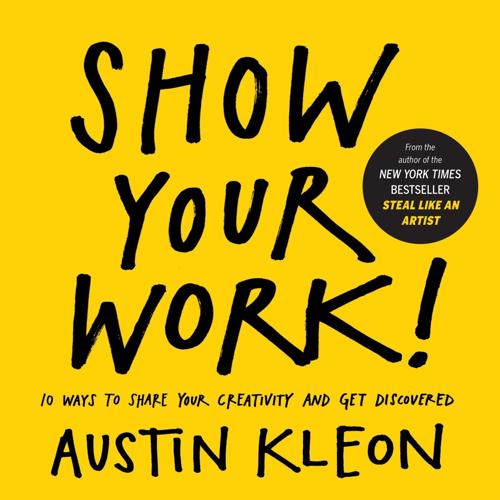
Show Your Work!: 10 Ways to Share Your Creativity and Get Discovered
by
Austin Kleon
Published 6 Mar 2014
—Henry Wadsworth Longfellow There are a lot of destructive myths about creativity, but one of the most dangerous is the “lone genius” myth: An individual with superhuman talents appears out of nowhere at certain points in history, free of influences or precedent, with a direct connection to God or The Muse. When inspiration comes, it strikes like a lightning bolt, a lightbulb switches on in his head, and then he spends the rest of his time toiling away in his studio, shaping this idea into a finished masterpiece that he releases into the world to great fanfare. If you believe in the lone genius myth, creativity is an antisocial act, performed by only a few great figures—mostly dead men with names like Mozart, Einstein, or Picasso.

How We Got to Now: Six Innovations That Made the Modern World
by
Steven Johnson
Published 28 Sep 2014
What Edison and the muckers created was much bigger than that: a network of multiple innovations, all linked together to make the magic of electric light safe and affordable. New York: Adapting the Brush Electric Light to the Illumination of the Streets, a Scene Near the Fifth Avenue Hotel. Why should we care whether Edison invented the lightbulb as a lone genius or as part of a wider network? For starters, if the invention of the lightbulb is going to be a canonical story of how new technologies come into being, we might as well tell an accurate story. But it’s more than just a matter of getting the facts right, because there are social and political implications to these kinds of stories.
…
But it’s more than just a matter of getting the facts right, because there are social and political implications to these kinds of stories. We know that one key driver of progress and standards of living is technological innovation. We know that we want to encourage the trends that took us from ten minutes of artificial light on one hour’s wage to three hundred days. If we think that innovation comes from a lone genius inventing a new technology from scratch, that model naturally steers us toward certain policy decisions, like stronger patent protection. But if we think that innovation comes out of collaborative networks, then we want to support different policies and organizational forms: less rigid patent laws, open standards, employee participation in stock plans, cross-disciplinary connections.
…
No other book had as much influence on the postmodern style that would dominate art and architecture over the next two decades. Learning from Las Vegas gives us a clear case study in how the long-zoom approach reveals elements that are ignored by history’s traditional explanatory frameworks: economic or art history, or the “lone genius” model of innovation. When you ask the question of why postmodernism came about as a movement, on some fundamental level the answer has to include Georges Claude and his hundred liters of neon. Claude’s innovation wasn’t the only cause, by any means, but, in an alternate universe somehow stripped of neon lights, the emergence of postmodern architecture would have in all likelihood followed a different path.

Longitude
by
Dava Sobel
Published 1 Jan 1995
LONGITUDE The True Story of a Lone Genius Who Solved the Greatest Scientific Problem of His Time DAVA SOBEL Contents 1. Imaginary Lines 2. The Sea Before Time 3. Adrift in a Clockwork Universe 4. Time in a Bottle 5. Powder of Sympathy 6. The Prize 7. Cogmaker’s Journal 8. The Grasshopper Goes to Sea 9. Hands on Heaven’s Clock 10. The Diamond Timekeeper 11. Trial by Fire and Water 12. A Tale of Two Portraits 13. The Second Voyage of Captain James Cook 14. The Mass Production of Genius 15. In the Meridian Courtyard Acknowledgments Sources For my mother, Betty Gruber Sobel, a four-star navigator who can sail by the heavens but always drives by way of Canarsie. 1.
…
No part of this book may be reproduced or transmitted in any form or by any means, electronic or mechanical, including photocopying, recording, or by any information storage and retrieval system, without permission in writing from the Publisher. First published in the United States of America in 1995 by Walker Publishing Company, Inc. Published simultaneously in Canada by Thomas Allen & Son Canada, Limited, Markham, Ontario Library of Congress Cataloging-in-Publication Data Sobel, Dava. Longitude : the true story of a lone genius who solved the greatest scientific problem of his time / Dava Sobel. p. cm. Includes bibliographical references. eISBN: 978-0-802-77943-4 1. Longitude—Measurement—History. 2. Harrison, John. 1693-1776. 3. Clock and watch makers—Great Britain—Biography. I. Title. QB225.S64 1995 526’.62’09—dc20 95-17402 CIP Illustration of H-4 on title page spread used by permission of the National Maritime Museum, London.
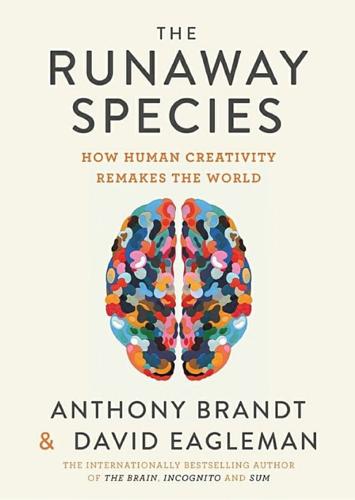
The Runaway Species: How Human Creativity Remakes the World
by
David Eagleman
and
Anthony Brandt
Published 30 Sep 2017
“Fifteen Years Ago: The First Mass-Produced GSM Phone.” Register. November 9, 2007. Accessed May 11, 2016. <http://www.theregister.co.uk/2007/11/09/ft_nokia_1011/> Snelson, Robert. “X Prize Losers: Still in the Race, Not Doing Anything, or Too SeXy for The X Cup?” The Space Review. September 26, 2005. Sobel, Dava. Longitude: The True Story of a Lone Genius Who Solved the Greatest Scientific Problem of His Time. New York: Walker, 1995. Soble, Jonathan. “Kenji Ekuan, 85; Gave Soy Sauce Its Graceful Curves.” New York Times. February 10, 2015. Soling, Cevin. “Can Any School Foster Pure Creativity?” Mind Shift. March 18, 2014. Accessed April 27, 2014.
…
It was developed by John Ellman and Michael Pavia, and builds on the work of earlier pioneers in combinatorial chemistry. 6 Thomas A. Edison, “The Phonograph and Its Future,” Scientific American 5, no. 124 (1878): 1973-4, <http://dx.doi.org/10.1038/scientificamerican05181878-1973supp> 7 Dava Sobel, Longitude: The True Story of a Lone Genius Who Solved the Greatest Scientific Problem of His Time (New York: Walker, 1995). 8 Dava Sobel, Longitude. 9 Unfortunately, Harrison never received his due. To test whether Harrison’s elaborate design could be manufactured by others, the Board of Longitude commissioned another watchmaker named Larcum Kendall to make a copy.
…
It was developed by John Ellman and Michael Pavia, and builds on the work of earlier pioneers in combinatorial chemistry. 6 Thomas A. Edison, “The Phonograph and Its Future,” Scientific American 5, no. 124 (1878): 1973-4, <http://dx.doi.org/10.1038/scientificamerican05181878-1973supp> 7 Dava Sobel, Longitude: The True Story of a Lone Genius Who Solved the Greatest Scientific Problem of His Time (New York: Walker, 1995). 8 Dava Sobel, Longitude. 9 Unfortunately, Harrison never received his due. To test whether Harrison’s elaborate design could be manufactured by others, the Board of Longitude commissioned another watchmaker named Larcum Kendall to make a copy.
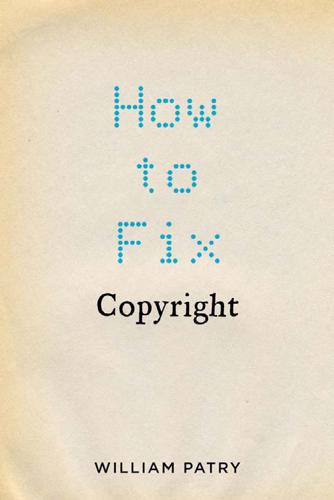
How to Fix Copyright
by
William Patry
Published 3 Jan 2012
We therefore need the strongest copyright laws possible in order to provide the strongest protection for our superstars. Moreover, we need distributors to own the copyright in superstars’ works because it is distributors who know the markets and marketing, and know how to effectively make money for the superstars. The myth of the Lone Genius is a distributors’ myth that some artists buy into, but it ill-serves copyright and the majority of artists.37 Creativity is furthered not by limiting success to a few superstars, but by opening up audiences and the channels of distribution to the many. Culture is the result of sharing creative experiences, not walling creativity off as the province of only a select few.
…
We are supposed to 90 HOW TO FIX COPYRIGHT show our respect for the lonely geniuses by consuming their products, and by recognizing that their genius requires us not to create and certainly not to copy from them, since we cannot be like them. Creativity is served, however, not by prohibiting copying, but by encouraging it: as often as possible, by as many as possible. The myth of the Lone Genius drives a stake through the heart of the central, actual requirement for creativity to flourish: the ability to copy. If policymakers truly want to increase creativity, then they must greatly liberalize the ability of one person to transformatively copy from another.40 CREATIVITY IS BASED ON COPYING If we genuinely want to encourage creativity, we must encourage copying.
…
November 16, 2010, available at: http://www.npr.org/2010/11/15/ 131334322/the-fresh-air-interview-jay-z-decoded. The Rza, The Wu-Tang Manual 192 (2005). See Olufunmilayo Arewa, The Freedom to Copy: Copyright, Creation and Context, 41 University of California at Davis Law Review 477 (2007). Alfonso Montouri and Ronald Purser, Deconstructing the Lone Genius Myth:Toward a Contextual View of Creativity, 35 Journal of Humanistic Psychology 69, 82 (1995). The U.S. Copyright Act defines “derivative work” as: A “derivative work” is a work based upon one or more preexisting works, such as a translation, musical arrangement, dramatization, fictionalization, motion picture version, sound recording, art reproduction, abridgment, condensation, or any other form in which a work may be recast, transformed, or adapted.
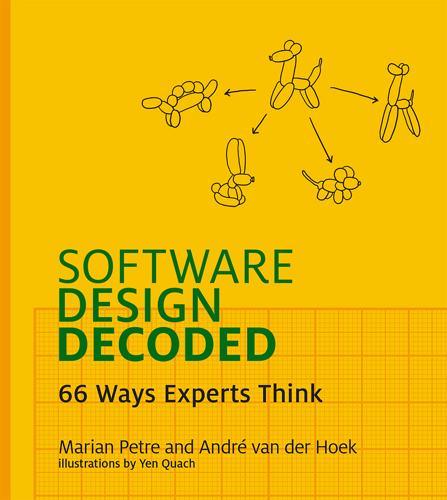
Software Design Decoded: 66 Ways Experts Think
by
Marian Petre
,
André van Der Hoek
and
Yen Quach
Published 5 Oct 2016
By invoking metaphor, a more vivid and immediately available picture is evoked of some aspects of the software, which particularly benefits collaborative design work in quickly and succinctly communicating ideas and assumptions. Experts collaborate 7 Experts prefer working with others To experts, the image of the designer as a lone genius who has flashes of brilliance is a fallacy. Experts know that stimulation through working with others is key to their own design performance. Moments of surprising or deep insight do happen, but experts know that those moments are more likely in a rich, collaborative environment. 8 Experts reach out Experts deliberately involve others outside of their team when they have a purpose for doing so, often to obtain specialized technical or domain knowledge.
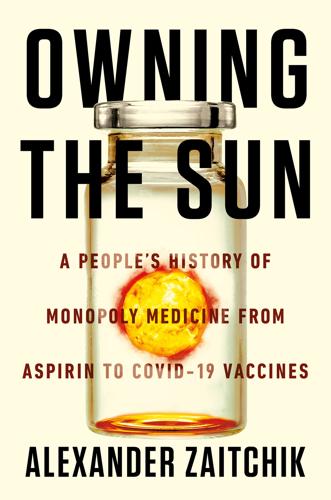
Owning the Sun
by
Alexander Zaitchik
Published 7 Jan 2022
The acceptance of intellectual property at Philadelphia in 1787 was at best hesitant, and the skeptical vein in the country’s thinking on patents never died. This was partly due to the influence of Enlightenment ideas about knowledge and invention as a cumulative and incremental process. The cult of the lone genius, of the self-reliant inventor-entrepreneur, was a suckling by comparison. Hamilton agreed with Arnold that this character of the lone genius, never terribly convincing, had become a self-serving if not ridiculous bit of modern capitalist folklore. But as Arnold wrote in his 1937 book on the subject, folklore is powerful. Challenging the folklore of patents would require telling a new story about invention, genius, and progress in the industrial age.
…
At its founding convention, also in Philadelphia, the drug makers cited an ethical duty to ensure medical discoveries and related science are widely disseminated for the nation’s and the species’ benefit. The druggists adopted the doctors’ broad philosophical approach to the patent taboo, couching the prohibition in a rejection of the myth of the lone genius. Given the cumulative nature of scientific discovery, in which increment is added to increment over the span of time, claims of being “sole inventor” were deemed fraudulent. Succumbing to the temptations of medical monopoly guaranteed exile from the republic of science and excoriating public censure.

Think Like a Rocket Scientist: Simple Strategies You Can Use to Make Giant Leaps in Work and Life
by
Ozan Varol
Published 13 Apr 2020
The Myth of the Lone Genius “These rovers are so complicated that no one understands them.” This might strike you as an odd statement coming from Steve Squyres, the principal investigator of the 2003 Mars Exploration Rovers project. He led the team responsible for dreaming up the rovers, devising the onboard instruments, and operating them on the Martian surface. But even to Squyres, the rovers are “too complicated for a single person to wrap their head around completely.” The understanding comes not individually, but as part of the collective brain. We often fetishize the lone genius toiling away in the garage—whether it’s Bowerman tinkering with his waffle iron in his own garage or Jobs building the first Apple computer from the garage of his family home.
…
What gave Newton the multimillion-pound edge was his willingness to get the opinion of his daughter—an outsider to the publishing industry, but a member of the target audience for the book. This isn’t to suggest that all original ideas come from beginners. To the contrary, expertise is valuable in idea generation, but experts shouldn’t work in complete isolation, the lone genius lore be damned. Experts also benefit from intermittent periods of collaboration, particularly when amateurs are brought into the mix. IT DOESN’T TAKE a genius polymath to devise thought experiments. All it takes is a desire to collect apples and oranges, the patience to sit in boredom while your subconscious compares and connects them, and a willingness to expose the new fruits to others—whether it’s the scientists on your engineering team or your eight-year-old daughter.

Our Final Invention: Artificial Intelligence and the End of the Human Era
by
James Barrat
Published 30 Sep 2013
Put another way, I believe the Busy Child will come very soon. The fear of being outsmarted by greater-than-human intelligence is an old one, but early in this century a sophisticated experiment about it came out of Silicon Valley, and instantly became the stuff of Internet legend. The rumor went like this: a lone genius had engaged in a series of high-stakes bets in a scenario he called the AI-Box Experiment. In the experiment, the genius role-played the part of the AI. An assortment of dot-com millionaires each took a turn as the Gatekeeper—an AI maker confronted with the dilemma of guarding and containing smarter-than-human AI.
…
Vassar smiled at the cult idea. “People who come to work for MIRI are the opposite of joiners. Usually they realize AI’s dangers before they even know MIRI exists.” I didn’t know MIRI existed until after I’d heard about the AI-Box Experiment. A friend had told me about it, but in the telling he got a lot wrong about the lone genius and his millionaire opponents. I tracked the story to a MIRI Web site, and discovered that the experiment’s creator, Eliezer Yudkowsky, had cofounded MIRI (then called the Singularity Institute for Artificial Intelligence) with entrepreneurs Brian and Sabine Atkins. Despite his reputed reticence, Yudkowsky and I exchanged e-mails and he gave me the straight dope about the experiment.

The Slow Fix: Solve Problems, Work Smarter, and Live Better in a World Addicted to Speed
by
Carl Honore
Published 29 Jan 2013
Study after study shows that when explaining events we tend to put too much emphasis on the role of individual agency and not enough on circumstances, a phenomenon dubbed the Fundamental Attribution Error. That is why we routinely assume CEOs have more power to shape the fortunes of their companies than all the research suggests. We certainly love the idea of the lone genius, the solo expert toiling away in solitude before finally shrieking “Eureka!” and emerging into the sunlight clutching a fully-formed solution to a problem. It’s simple. It’s romantic. It’s thrilling. But often it’s wide of the mark. Even before the modern era the best ideas seldom sprang whole from a single mind; rather, they were the fruit of cross-fertilisation among various minds.
…
Pinpointing vessel lost at sea: Surowiecki, The Wisdom of Crowds, pp. xx-xxi. Public identifies Mars craters: Surowiecki, The Wisdom of Crowds, p. 276. Diversity Trumps Ability Theorem: Based on my interview with Scott Page. John Harrison: For the whole story check out Dava Sobel, Longitude: The True Story of a Lone Genius Who Solved the Greatest Scientific Problem of His Time (London: Fourth Estate, 1998). Teenager invents method for detecting pancreatic cancer: Jake Andraka won first place at the 2012 Intel International Science and Engineering Fair (Intel ISEF), a program of the Society for Science and the Public.

Coders: The Making of a New Tribe and the Remaking of the World
by
Clive Thompson
Published 26 Mar 2019
When the MBA students were told the company was “meritocratic,” they gave the men 12 percent higher bonuses. Why? Because, the scholars suspect, when you prime someone with the idea of meritocracy, it seems to give them permission to act on their internal biases—evoking, it would seem, the cultural idea of the man as more likely to be the lone genius. Is it possible to reverse the historic shift of women out of coding? Back in the ’90s, CMU’s Allan Fisher decided to try. Impressed by Jane Margolis’s findings, he and the faculty instituted several changes designed to break the confidence-destroying loop of neophytes who’d glance around their first classroom, worry they’d never catch up with their confident teen-hacker peers, and begin the slow drift toward leaving.
…
unironic, literal concept: Michael Young, “Down with Meritocracy,” Guardian, June 28, 2001, accessed August 19, 2018, https://www.theguardian.com/politics/2001/jun/29/comment. like math or philosophy—they’re not: Sarah-Jane Leslie, Andrei Cimpian, Meredith Meyer, and Edward Freeland, “Expectations of Brilliance Underlie Gender Distributions across Academic Disciplines,” Science 347, no. 6219 (January 16, 2015): 262–65. to be the lone genius: Emilio J. Castilla and Stephen Benard, “The Paradox of Meritocracy in Organizations,” Administrative Science Quarterly 55 (2010): 543–76. match those of the men: Margolis and Fisher, Unlocking the Clubhouse, location 1620 of 2083, Kindle. Using Computational Approaches: Laura Sydell, “Colleges Have Increased Women Computer Science Majors: What Can Google Learn?
…
See minority coders law/lawyers, ref1 Lazowska, Ed, ref1 LBGT tech employees, ref1 LDX, ref1 LeapChat.org, ref1 LeCun, Yann, ref1 Lee, Cynthia, ref1, ref2 Lee, Jennifer 8, ref1 Lee, Kai-Fu, ref1, ref2 Legend of Zelda, The (game), ref1 Leibniz, Gottfried, ref1 Leopold, Jason, ref1 Leslie, Sarah Jane, ref1 Levchin, Max, ref1, ref2 Levy, Josh, ref1 Levy, Steven, ref1, ref2, ref3 Lewis, Clayton, ref1 Li, Fei-Fei, ref1 libertarianism, in coding community, ref1, ref2, ref3 Lichterman, Ruth, ref1 Like button (Facebook), ref1 LINC, ref1 Linux, ref1, ref2 LiveJournal, ref1 Loewenstern, Andrew, ref1 Logic, ref1 lone genius working feverishly stereotype. See 10X coders Lopp, Michael, ref1 Losse, Kate, ref1 Lotus Notes, ref1 Lovelace, Ada, ref1 Lucy Parsons Lab, ref1 Lund, Kátia, ref1 Lyft, ref1 McCarthy, John, ref1 McClure, Dave, ref1 McFarlane, Jill, ref1 McKellar, Jessica, ref1 McNulty, Kathleen, ref1 Madison, James, ref1 Magic Leap, ref1 Malhotra, Neil, ref1 malware, ref1 Manning, Chelsea, ref1 MapReduce, ref1 Margolis, Jane, ref1, ref2 Marlinspike, Moxie, ref1 Martínez, Antonio Garcia, ref1 Martiros, Hayk, ref1 Mason, Hilary, ref1, ref2, ref3 Masters of Deception, ref1 Matrix, The (film), ref1, ref2, ref3 May, Tim, ref1, ref2 Meebo, ref1 Meituan, ref1 #metoo, ref1 mental health issues, ref1 meritocracy myth, ref1, ref2 “brilliant jerk” downside of worship of coder merit, ref1 code as arbiter of what is great, ref1, ref2 as coping mechanism for high school/corporate life social orders, ref1 fortune, role of, ref1 great ideas, value of, ref1 Levchin/PayPal and, ref1 open source software and, ref1, ref2 PayPal and, ref1, ref2 political views of coders and (See politics, of coders) provenance of, ref1 self-taught individuals, acceptance of, ref1, ref2 side effects of belief in, ref1 10x coders and, ref1, ref2, ref3 women and minorities, lack of, ref1 Zuckerberg on, ref1 Metasploit, ref1 Microsoft, ref1, ref2, ref3 microtargeting, ref1 Miller, Robyn, ref1 Minecraft, ref1 minority coders bifurcation in pay and prestige of coding jobs available to, ref1 computer science degree drop-out rates, in 1980s onward, ref1 hostile work environment encountered by, ref1, ref2 lack of, ref1, ref2 LBGT employees, harassment faced by, ref1 mistaken for security or housekeeping personnel, ref1 percentage in workplace, 2017, ref1 Mirai botnet, ref1 MIT AI lab hackers, in 1960s and early 1970s, ref1 privacy versus secrecy clashes at, in 1960s and 1970s, ref1 Wilkes’ early work at Lincoln Labs, ref1 “Mixing Math and Motherhood” (Businessweek), ref1 moderators, ref1 Molnar, Charles, ref1 Moses, Robert, ref1 Moskovitz, Dustin, ref1 Mozilla, ref1 Mr.

The Knowledge: How to Rebuild Our World From Scratch
by
Lewis Dartnell
Published 15 Apr 2014
nitrogen gas is the least reactive diatomic substance: Schrock (2006). Haber-Bosch process: Standage (2010), Kean (2010), Perkins (1977), Edgerton (2007a). 12: TIME AND PLACE Adam Frank, About Time: Cosmology and Culture at the Twilight of the Big Bang. Eric Bruton, The History of Clocks & Watches. Dava Sobel, Longitude: The True Story of a Lone Genius Who Solved the Greatest Scientific Problem of His Time. Epigraph: Denis Diderot as quoted by Goodman (1995). constancy of sand time (hourglass) compared to water clock: Bruton (2000). sundials: Oleson (2008). Manhattan as a city-size Stonehenge: Astronomy Picture of the Day, July 12, 2006, http://apod.nasa.gov/apod/ap060712.html.
…
Einstein’s Refrigerator: And Other Stories from the Flip Side of History. Kansas City, MO: Andrews McMeel Publishing. Smith, Gerald. 2009. “The Chemistry of Historically Important Black Inks, Paints and Dyes.” Chemistry Eduction in New Zealand, (May): 12–15. Sobel, Dava. 1995. Longitude: The True Story of a Lone Genius Who Solved the Greatest Scientific Problem of His Time. New York: Walker & Company. Solomon, Steven. 2011. Water: The Epic Struggle for Wealth, Power, and Civilization. New York: Harper Perennial. Solomon, Susan, Gian-Kasper Plattner, Reto Knutti, and Pierre Friedlingstein. 2009. “Irreversible Climate Change Due to Carbon Dioxide Emissions.”

Human Frontiers: The Future of Big Ideas in an Age of Small Thinking
by
Michael Bhaskar
Published 2 Nov 2021
Their personal interactions and rivalry in the ‘current war’, where Edison's direct current slugged it out against Tesla's alternating current, only add spice to the drama. But of course this is a myth. In fact both of them show how much, by this point in history, invention was an institutional affair. Edison cultivated the impression of a lone genius, growing up poor in rural Ohio, constantly experimenting and tinkering and selling newspapers on the Grand Trunk Road to Detroit. In his early days, working on telegraphic innovations in Boston, he was pretty much a one-man band. But his later success depended on producing one of the world's first and most famous industrial R&D labs.
…
It became a byword for invention. All this cost money: Edison was bankrolled by the preeminent financier of the era, J.P. Morgan, without whom he would have struggled to survive. The Serbian-born inventor and sometime collaborator and rival of Edison, Nikola Tesla, has established a reputation as a lone genius, a singular savant big-idea generator almost without peer: the man behind the AC motor and the building blocks of radio, but also everything from X-rays and remote control to robotics, microwaves and TV. Thanks to the film The Prestige, the popular image of Tesla is of a man huddled away in the Colorado wilderness single-handedly revolutionising technology and science.
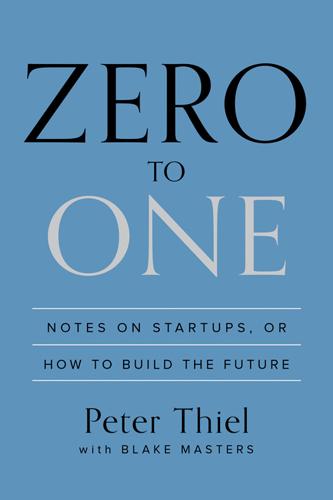
Zero to One: Notes on Startups, or How to Build the Future
by
Peter Thiel
and
Blake Masters
Published 15 Sep 2014
Bureaucratic hierarchies move slowly, and entrenched interests shy away from risk. In the most dysfunctional organizations, signaling that work is being done becomes a better strategy for career advancement than actually doing work (if this describes your company, you should quit now). At the other extreme, a lone genius might create a classic work of art or literature, but he could never create an entire industry. Startups operate on the principle that you need to work with other people to get stuff done, but you also need to stay small enough so that you actually can. Positively defined, a startup is the largest group of people you can convince of a plan to build a different future.
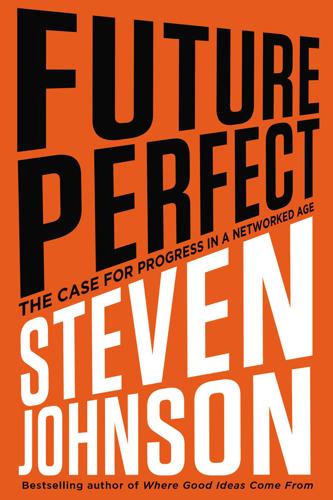
Future Perfect: The Case for Progress in a Networked Age
by
Steven Johnson
Published 14 Jul 2012
On the innovation threat posed by intellectual property restrictions, see Lawrence Lessig’s The Future of Ideas, and my own Where Good Ideas Come From. Ayn Rand’s views on patents come from an essay, “Patents and Copyrights,” included in the collection Capitalism: The Unknown Ideal. John Harrison’s story is told in Dava Sobel’s popular Longitude: The True Story of a Lone Genius Who Solved the Greatest Scientific Problem of His Time. Beth Noveck’s inspirational work with crowdsourced patent review, dubbed “peer to patent,” is described in her WikiGovernment. For more on Jon Schnur and the origin and implementation of the Race to the Top program, see Steve Brill’s entertaining Class Warfare: Inside the Fight to Fix America’s Schools.
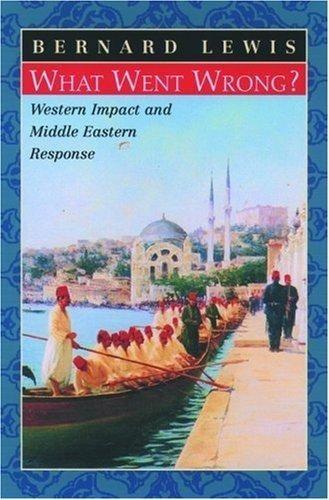
What Went Wrong? Western Impact and Middle Eastern Response
by
Bernard Lewis
Published 1 Jan 2001
The same qualities may be seen, in a more obvious form, in the work of the historian, and indeed distinguishes his writing from that of the chronicler or annalist. All these involve some degree of harmonization—by the novelist or playwright, the party leader or team captain, the composer and conductor. The same applies, perhaps with even greater force, to modern scientific research, which is no longer the preserve of the lone genius, but has come to rely increasingly on teamwork and organization. Modern science has extended our capacity to observe and to measure both time and space to a previously inconceivable degree, extending the scale from the nanosecond to the light year. Polyphony, in whatever form, requires exact synchronization.
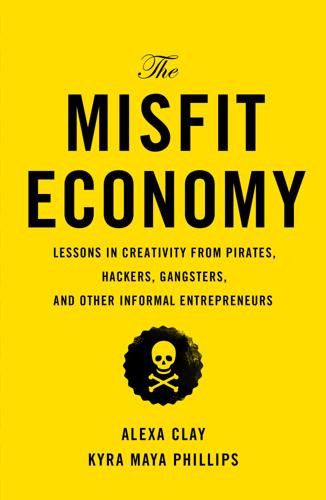
The Misfit Economy: Lessons in Creativity From Pirates, Hackers, Gangsters and Other Informal Entrepreneurs
by
Alexa Clay
and
Kyra Maya Phillips
Published 23 Jun 2015
A misfit with a tight community can be far more influential. In 1921 the young aspiring American writer Ernest Hemingway moved to Paris, where he faced poverty, drank himself senseless, fell deeply in and out of love, and, having found his voice as a writer, became a true innovator of the written word. But Hemingway’s transformation isn’t a story of lone genius; like many an innovator, he owed a substantial debt to a collective, notably the expatriates who gathered in Paris in the 1920s. Beyond the myth of rugged individualism surrounding him, Hemingway benefited from the commitment, mentoring, and support of this small group of people—an entourage, if you will.
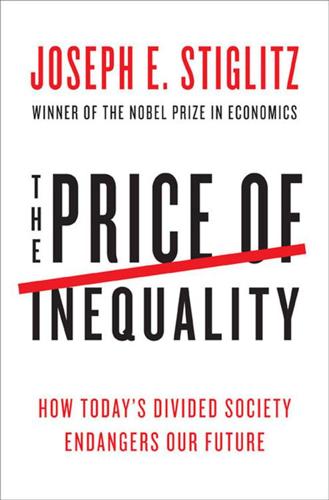
The Price of Inequality: How Today's Divided Society Endangers Our Future
by
Joseph E. Stiglitz
Published 10 Jun 2012
The adverse effects of so-called incentive pay The Right, like many economists, tends to overestimate the benefits and underestimate the costs of incentive pay. There are certainly contexts in which monetary prizes have the potential to focus minds on a thorny problem and deliver a solution. A famous example is detailed in Dava Sobel’s Longitude: The True Story of a Lone Genius Who Solved the Greatest Scientific Problem of His Time. As she reports, in the Longitude Act of 1714, the British Parliament set “a prize equal to a king’s ransom (several million dollars in today’s currency) for a ‘Practicable and Useful’ means of determining longitude.” This was critical to the success of transoceanic navigation.
…
Hoff, “Market Failures and the Distribution of Wealth: A Perspective from the Economics of Information,” Politics and Society 24, no. 4 (1996): 411–32; and Hoff, “The Second Theorem of the Second Best,” Journal of Public Economics 25 (1994): 223–42. 55. The exciting story is told in the bestseller by Dava Sobel, Longitude: The True Story of a Lone Genius Who Solved the Greatest Scientific Problem of His Time (New York: Walker, 1995). 56. Technically, the problems with incentive pay arise when there are information asymmetries. The employer doesn’t fully know the quality of the products produced by the worker (otherwise, he would specify that).

Making Ideas Happen: Overcoming the Obstacles Between Vision and Reality
by
Scott Belsky
Published 31 Mar 2010
Your mind was held in suspense all the time, you spurred the others on to sincere, disinterested inquiry and were spurred on yourself, you laid in a stock of enthusiasm that kept you going for weeks on end until you could give final form to the idea you had in mind. You always went home afterwards better steeled for the fray, with a new sense of purpose and a clearer head.4 Despite prevailing notions of the lone genius, this story of how the Impressionists, a circle of friends, spurred each other on to achieve major breakthroughs in the world of painting is more common than you might think. Circles like this play a critical role in making ideas happen across creative industries. In some cases, the use of circles has been institutionalized, while in others, formal circles are nonexistent.

The Creative Curve: How to Develop the Right Idea, at the Right Time
by
Allen Gannett
Published 11 Jun 2018
If you’re an established figure who already lives in one of those cities, don’t forget that by lending your credibility to a newcomer, you not only pay it forward, you also gain from the other person’s fresh ideas. The Creative Community When we glimpse a famous entrepreneur, actor, musician, or poet on the cover of a magazine, it can be easy to subscribe once again to the lone genius theory of creativity. Yet pretty much all the high-achieving creatives I spoke with for this book had built a creative community made up of a group of people who continue to help them on their journey toward creating hits. These creative communities feature four types of individuals: 1.

Internet for the People: The Fight for Our Digital Future
by
Ben Tarnoff
Published 13 Jun 2022
That day in 1977 offered the first real evidence that this language could work at scale. There had been earlier experiments, but never one of such complexity. Pulling it off—and getting to the point where it could even be attempted—took a colossal, and collective, effort. The internet wasn’t invented by a lone genius tinkering in a garage. Rather, it involved thousands of individuals engaged in a decades-long act of co-creation. It took collaboration, cross-pollination, and the slow, accretive work of building on earlier breakthroughs to generate new ones. It also took a lot of public money. Most of the innovation on which Silicon Valley depends comes from government-funded research, for the simple reason that the public sector can afford to take risks that the private sector can’t.
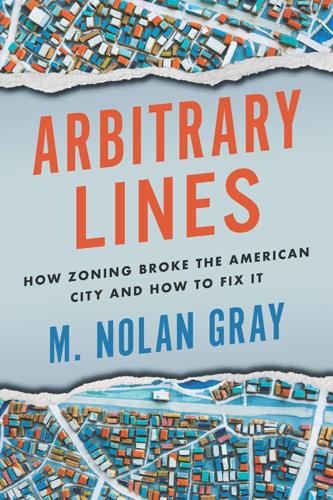
Arbitrary Lines: How Zoning Broke the American City and How to Fix It
by
M. Nolan Gray
Published 20 Jun 2022
This is especially true among firms in the same industry, which helps to explain why industries cluster so aggressively, be it automotive engineering in Detroit or music in Nashville. Residents of these cities enjoy access to an accumulated body of knowledge that makes them the best at what they do.10 For all the mythology surrounding the lone genius, most innovation emerges from small groups exchanging ideas. Economists have picked up on evidence for such knowledge spillovers in things like academic and patent citations, which reveal that researchers and inventors are far more likely to cite someone physically near them.11 But the legends surrounding knowledge spillovers perhaps remain more compelling than the data.
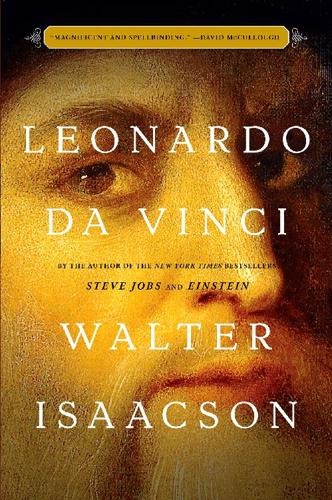
Leonardo Da Vinci
by
Walter Isaacson
Published 16 Oct 2017
Leonardo drew a moral: “This is what happens to those who leave a life of solitary contemplation and choose to come to dwell in cities among people full of infinite evil.”2 His notebooks have many other maxims praising the countryside and solitude. “Leave your family and friends and go over the mountains and valleys into the country,” he instructed aspiring painters. “While you are alone you are entirely your own master.”3 These paeans to country living are romantic and, for those who cherish the image of lonely genius, quite appealing. But they are infused with fantasy. Leonardo would spend almost all of his career in Florence, Milan, and Rome, crowded centers of creativity and commerce, usually surrounded by students, companions, and patrons. He rarely retreated alone to the countryside for an extended period of solitude.
…
But he did begin one of a silk-merchant’s wife named Lisa. He did it because he wanted to, and he kept working on it for the rest of his life, never delivering it to the silk merchant. Collaborate. Genius is often considered the purview of loners who retreat to their garrets and are struck by creative lightning. Like many myths, that of the lone genius has some truth to it. But there’s usually more to the story. The Madonnas and drapery studies produced in Verrocchio’s studio, and the versions of Virgin of the Rocks and Madonna of the Yarnwinder and other paintings from Leonardo’s studio, were created in such a collaborative manner that it is hard to tell whose hand made which strokes.
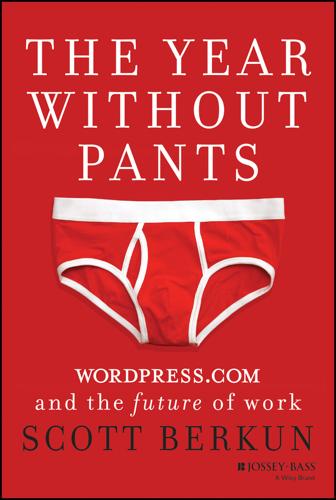
The Year Without Pants: Wordpress.com and the Future of Work
by
Scott Berkun
Published 9 Sep 2013
And since there are people working from nearly every time zone in the world, there was always someone online to help with a problem or joke around with when you're working. One of the accounts I needed to set up had a problem, so Hanni handed me off to Barry Abrahamson, the benevolent lord of all of WordPress.com's systems. If you imagine a secret underground bunker with endless rows of humming web servers and a lone genius conjuring spells to keep it all running, that's Barry. The only difference is there is no bunker. And no rows of servers, at least not in his presence. All the machinery used to power WordPress.com is housed in data centers around the United States, and Barry controls everything from his home in Texas.

12 Bytes: How We Got Here. Where We Might Go Next
by
Jeanette Winterson
Published 15 Mar 2021
The satirical magazine Punch offered this Babbage spoof back in 1844: Sir … I have been completely successful in the production of a New Patent Mechanical Novel Writer – adapted to all styles and all subjects … Babbage Followed by testimonials: By its assistance I am now able to complete a novel of 3 vols in the short space of 48 hours, whereas before, at least a fort-night’s labour was requisite for that purpose … And: Lord W has now nothing more to do than throw in some dozen of the most popular works of the day, and in a comparatively short space of time draw forth a spick-and-span new and original novel … No more labouring lone genius putting in the 10,000 hours of slog. This is pop art before Warhol. This isn’t art for the masses, this is art from the masses, and masses of it. Not rare. Not strange. Not special. Continuous. Combinatory. Computer. (Those 5,000 extra Bach chorales done over a lunchtime sandwich. Brian Eno’s forever app.)

Reinventing Capitalism in the Age of Big Data
by
Viktor Mayer-Schönberger
and
Thomas Ramge
Published 27 Feb 2018
Similarly, the construction of the Large Hadron Collider, which in 2012 detected the Higgs boson and helped solidify the Standard Model of particle physics, involved more than 10,000 scientists from over one hundred countries. We do not unravel the mysteries of our universe and our existence through the work of a single lone genius but rather through collaboration among many other individuals. As one of Linnaeus’s students put it, “He who holds the chain of things looks with grace upon each link.” The varieties of human coordination are as diverse as human populations, from the web of reciprocal responsibilities and duties within a social network of family and kinship to the centralized command and control of an army to the collaborative peer production of encyclopedic projects and scientific experiments.

Death Glitch: How Techno-Solutionism Fails Us in This Life and Beyond
by
Tamara Kneese
Published 14 Aug 2023
The feminist STS scholar Laura Forlano describes the assemblage of human and nonhuman devices that facilitate the functioning of her disabled cyborg body, viewing the technologies themselves as collaborators: “In caring for myself, I am enlisted into a practice of actively participating in, maintaining, repairing and caring for multiple medical technologies (rather than using them passively).”46 Caring for the self and for others necessitates an ongoing negotiation between the body and technology, as well as the spaces where they meet. Given such interdependencies, an illness blog’s author is a manifestation of what the STS scholar Hélène Mialet calls a “distributed-centered subject.”47 According to Mialet, in the same vein as tech innovation and Great Men narratives, Stephen Hawking was reified as a lone genius while he relied on a combination of machines, other bodies, and other brains to carry out his research and remain a prominent public presence. This paradox is mirrored in the intersubjective workings of illness blogs, in which one person’s digital possession exists and survives thanks to the actions of many, even as this collective labor serves to reinforce the notion that a blog is a singular emanation of the sick, dying, or dead subject.
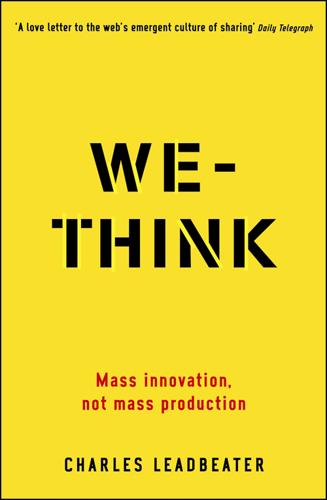
We-Think: Mass Innovation, Not Mass Production
by
Charles Leadbeater
Published 9 Dec 2010
None of the thousands of people who have created their own versions of the video, by impersonating, imitating and adapting Funtwo’s work asked permission. They just did it. Nothing was planned or scheduled months in advance. As with most things that get big on the web the video was not the work of a lone genius. Funtwo opened a window on a global micro community of classically trained electric guitar players who avidly play, share and comment on each other’s work. These guitarists are classic Pro Ams: they play for the love of it, not for money or fame, but they play to extremely high standards, enthusiastically learning from one another.
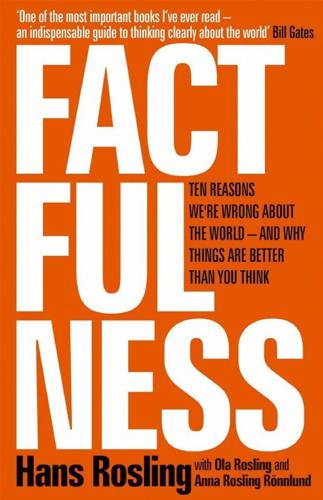
Factfulness: Ten Reasons We're Wrong About the World – and Why Things Are Better Than You Think
by
Hans Rosling
,
Ola Rosling
and
Anna Rosling Rönnlund
Published 2 Apr 2018
While I was getting ever angrier about people’s ignorance about the world, Ola and Anna instead took the analysis beyond anger and crystallized the humble and relaxing idea of Factfulness. Together we defined the practical thinking tools that we present in this book. What you are about to read was not invented according to the “lone genius” stereotype. It is instead the result of constant discussion, argument, and collaboration between three people with different talents, knowledge, and perspectives. This unconventional, often infuriating, but deeply productive way of working has led to a way of presenting the world and how to think about it, that I never could have created on my own.

New Dark Age: Technology and the End of the Future
by
James Bridle
Published 18 Jun 2018
In the eighteenth, the realisation of oxygen emerged almost simultaneously in the work of Carl Wilhelm Scheele, Joseph Priestley, Antoine Lavoisier, and others, while in the nineteenth, Alfred Russel Wallace and Charles Darwin both advanced the theory of evolution. Such histories give the lie to the heroic narrative of history – the lone genius toiling away to produce a unique insight. History is networked and atemporal: steam engine time is a multidimensional structure, invisible to a sensorium trapped in time, but not insensible to it. Despite such deep realities, there’s a wonderful thing that happens when you hear someone tell a story that just makes sense: a sense of who they are, and where they came from; the sense that something they did makes sense, has history and progress behind it, that it had to happen this way – and that it had to happen to them, because of the story itself.
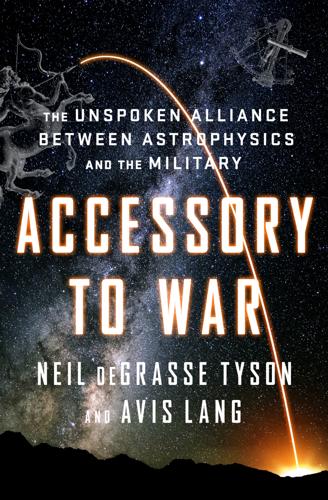
Accessory to War: The Unspoken Alliance Between Astrophysics and the Military
by
Neil Degrasse Tyson
and
Avis Lang
Published 10 Sep 2018
In fact, only by going south of the equator can one see the Sun in such a position, so the very assertion Herodotus rejects is the one that best argues for the journey’s actually having taken place. See discussion of Necho’s seventh-century BC and Carthaginian king Hanno’s fifth-century BC voyages in Casson, Ancient Mariners, 116–24. 24.Dava Sobel, Longitude: The True Story of a Lone Genius Who Solved the Greatest Scientific Problem of His Time (New York: Walker, 2005), 4. 25.Taylor, Haven-Finding Art, 12–13; Williams, Sails to Satellites, 8–9; Tibbetts, Arab Navigation, 129–32, 314; B. Arunachalam, “Traditional Sea and Sky Wisdom of Indian Seamen and Their Practical Applications,” in Tradition and Archaeology: Early Maritime Contacts in the Indian Ocean, ed.
…
Sluiter, Engel. “The Telescope Before Galileo.” Journal of the History of Astronomy 28:92 (Aug. 1997), 223–34. Smith, Marcia S. “Military and Civilian Satellites in Support of Allied Forces in the Persian Gulf War.” Congressional Research Service, Feb. 27, 1991. Sobel, Dava. Longitude: The True Story of a Lone Genius Who Solved the Greatest Scientific Problem of His Time. New York: Walker, 2005. Space Foundation. The Space Report: The Authoritative Guide to Global Space Activity. Annual publication, 2006– . Stanley-Lockman, Zoe, and Katharina Wolf. “European Defence Spending 2015: The Force Awakens.” European Union Institute for Security Studies—Brief Issue 10 (Mar. 2016).
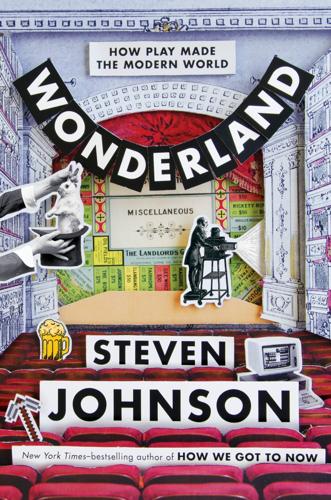
Wonderland: How Play Made the Modern World
by
Steven Johnson
Published 15 Nov 2016
Both the game itself—and the story of its origins—had entirely inverted the original progressive agenda of Lizzie Magie’s landlord game. A lesson in the abuses of capitalist ambition had been transformed into a celebration of the entrepreneurial spirit, its collectively authored rules reimagined as the work of a lone genius. — Game mythologies habitually seek out heroic inventors, even when those invention stories are on the very edges of plausibility. Every year, millions of baseball fans descend on the small town of Cooperstown, New York, to visit the Baseball Hall of Fame because Abner Doubleday invented the game in a cow pasture there in 1839.
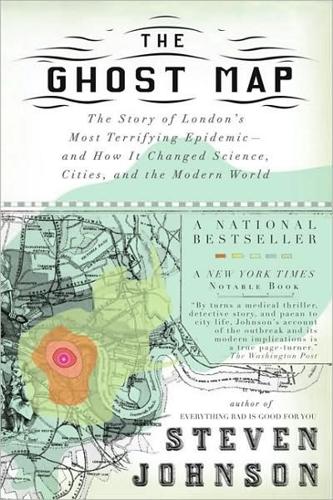
The Ghost Map: A Street, an Epidemic and the Hidden Power of Urban Networks.
by
Steven Johnson
Published 18 Oct 2006
But whatever emotion he showed the Eley brothers, when he stepped out of the factory into the bright light of Broad Street, he must have thought to himself with some satisfaction that the case was coming together quite nicely indeed. The miasmatists might finally have met their match. THERE IS A KIND OF MYTHOLOGY THAT STORIES LIKE THIS one tend inevitably to drift toward: the lone genius shaking off the chains of conventional wisdom through the sheer force of his intellect. But in explaining Snow’s battle against the miasma theory and the medical establishment, it’s not sufficient to point to his brilliance or his tenacity alone, though no doubt those characteristics played a crucial role.
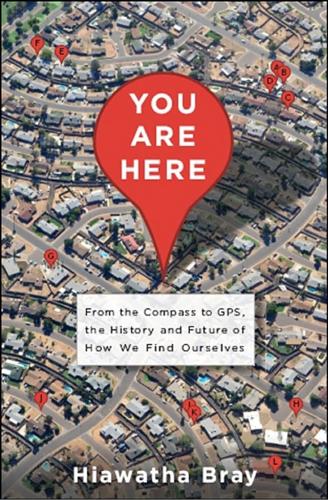
You Are Here: From the Compass to GPS, the History and Future of How We Find Ourselves
by
Hiawatha Bray
Published 31 Mar 2014
Lambert, The Gates of Hell: Sir John Franklin’s Tragic Quest for the North West Passage (New Haven, CT: Yale University Press, 2009), 74. 15. Frank Nothen Magill, Magill’s Survey of Science: Earth Science Series (Pasadena, CA: Salem Press, 1990), 2:541. 16. Dava Sobel, Longitude: The True Story of a Lone Genius Who Solved the Greatest Scientific Problem of His Time (New York: Penguin Books, 1995), 24–27. 17. Wilford, The Mapmakers, 132–151. Chapter 2 1. Abigail Foerstner, James Van Allen: The First Eight Billion Miles (Iowa City: University of Iowa Press, 2007), 50. 2. US Patent 716134, issued December 16, 1902. 3.

Driverless: Intelligent Cars and the Road Ahead
by
Hod Lipson
and
Melba Kurman
Published 22 Sep 2016
In the case of driverless cars, training data originates from several on-board hardware devices whose performance has improved dramatically over the past several years. The modern toolbox Driverless cars are a prime example of a force called recombinant innovation, the process of combining several existing technologies in new ways. Despite the popular stereotype of the lone, genius inventor, in reality many emerging technologies—particularly complex ones—are actually fresh combinations of old technologies put together again in a novel way.7 Recombinant innovation is an indirect by-product of Moore’s Law, the now-famous principle that over time, the performance of semiconductors improves at an exponential rate while their cost shrinks at a corresponding rate.
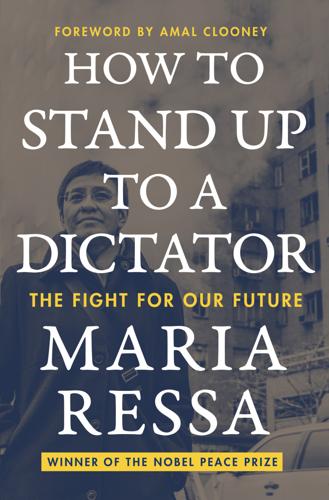
How to Stand Up to a Dictator
by
Maria Ressa
Published 19 Oct 2022
We wisely aimed all of our news network initiatives toward the May 2010 presidential elections, for which I co-opted two ideas popularized by American writers: the tipping point and crowdsourcing.8 The idea of the tipping point has its roots in epidemiology: when a virus multiplies below the radar screen and then hits the point when it changes the entire system. Crowdsourcing suggests that if a group’s members have diversity of ideas, independence of one another, a decentralized structure, and a mechanism for turning judgments into a collective decision, they can make smarter decisions than any lone genius can. Those four elements create the “wisdom of the crowds,” not mob rule. For our get-out-the-vote election campaigns, we used a gradual, studied tipping point approach. To try to build a community, we held eleven all-day, on-air multiplatform voter registration drives in more than twenty-one provinces.

Sextant: A Young Man's Daring Sea Voyage and the Men Who ...
by
David Barrie
Published 12 May 2014
South: The Endurance Expedition. London: Penguin Books. Skelton, R. A. (1970). Explorers’ Maps: Chapters in the Cartographic Record of Geographical Discovery. London: Hamlyn. Slocum, J. (1956). Sailing Alone Around the World. New York: Dover Publications. Sobel, D. (1996). Longitude: The True Story of a Lone Genius Who Solved the Greatest Scientific Problem of His Time. London: Fourth Estate. South America Pilot Volume II (1993 ed.). Taunton, UK: Hydrographic Office. Sterne, L. (2005). The Life and Opinions of Tristram Shandy, Gentleman. London: Folio Society. Suthren, V. (2004). The Sea Has No End: The Life of Louis-Antoine de Bougainville.

The Clockwork Universe: Saac Newto, Royal Society, and the Birth of the Modern WorldI
by
Edward Dolnick
Published 8 Feb 2011
At Cambridge, Newton could occasionally be seen standing in the courtyard, staring at the ground, drawing diagrams in the gravel with a stick. Eventually he would retreat indoors. His fellow professors did not know what the lines represented, but they stepped carefully around them, in order to avoid hindering the work of the lonely genius struggling to decipher God’s codebook. Acknowledgments My first career ambition, years ago, was to play professional basketball. This plan did not long endure. It was succeeded by a far longer-lived but perhaps equally foolish notion, to spend a lifetime studying theoretical mathematics.
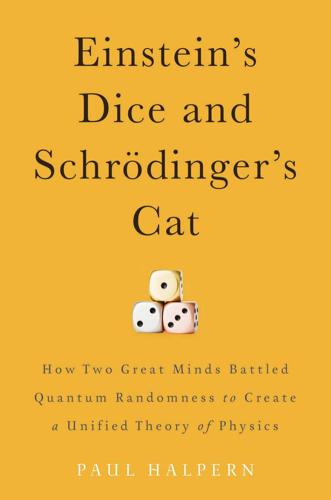
Einstein's Dice and Schrödinger's Cat: How Two Great Minds Battled Quantum Randomness to Create a Unified Theory of Physics
by
Paul Halpern
Published 13 Apr 2015
Groundbreaking 223 Einstein’s Dice and Schrödinger’s Cat discoveries are few and far between. Often a scientist needs to be lucky enough to be in the right place at the right time to make a mark. Most scientific research today is completed by large teams, rather than by single individuals. Yet the myth persists of the lone genius changing everything around us. Type “next Einstein” into any Internet search engine and expect to be bombarded with results—everything from recipes for educational success to claims made in resumes or personal ads. Here are a few assorted examples of recent media musings: Will the next Einstein be a “surfer dude”?
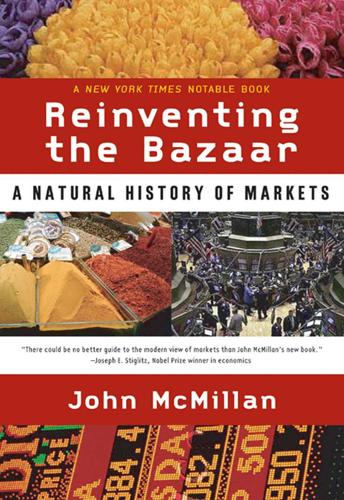
Reinventing the Bazaar: A Natural History of Markets
by
John McMillan
Published 1 Jan 2002
The location of ownership affects investment and performance. In situations that demand exceptional effort and where outcomes are highly responsive to such effort, decision-making cannot be effectively delegated; the owner needs to be directly involved. For innovation, in particular, ownership matters greatly. The lone genius driven to invent—Thomas Alva Edison dreaming up the light bulb or Alexander Graham Bell the telephone—is legendary. But it is not obvious that this is the best way to organize research today. Should innovators own the rights to their ideas? Or is innovation more effectively achieved in a large organization?

Masters of Scale: Surprising Truths From the World's Most Successful Entrepreneurs
by
Reid Hoffman
,
June Cohen
and
Deron Triff
Published 14 Oct 2021
Big ideas are often based on formative experiences from your past—though as Kevin points out, “you never know exactly what parts of your past will come together to complete that puzzle and be a product that you want to build for the world.” One of the most persistent and damaging myths in business today is the myth of the lone genius. We tend to tell the heroic story of innovation. This is a story that credits a single inventor: the founder, the creator. A genius has an idea. Everyone else executes on the idea. And then everyone waits for the genius to have another idea. But that’s a false story of innovation. Very rarely do ideas spring from our brains perfectly formed, like Athena from the brow of Zeus.

The Intelligence Trap: Revolutionise Your Thinking and Make Wiser Decisions
by
David Robson
Published 7 Mar 2019
Before we look specifically at the dynamics that link the England football team to the corporate boardroom, let’s first consider some more general intuitions about group thinking.6 One popular idea has been the ‘wisdom of the crowd’ – the idea that many brains, working together, can correct for each other’s errors in judgements; we make each other better.* Some good evidence of this view comes from an analysis of scientists’ journal articles, which finds that collaborative efforts are far more likely to be cited and applied than papers with just one author. Contrary to the notion of a lone genius, conversations and the exchange of ideas bring out the best in the team members; their combined brainpower allows them to see connections that had been invisible previously.7 Yet there are also plenty of notorious examples where team thinking fails, sometimes at great cost. Opposing voices like to point to the phenomenon of ‘groupthink’, first described in detail by the Yale University psychologist Irving Janis.

Cataloging the World: Paul Otlet and the Birth of the Information Age
by
Alex Wright
Published 6 Jun 2014
Nonetheless, Capart wouldn’t be budged from his plans to force out Otlet, whose “private enterprise” had been “hosted in a gracious and precarious state” for long enough, and the space was needed for a “normal expansion of the museum.”52 Finally accepting the inevitable, Otlet issued an announcement. “Following deplorable circumstances,” it read, “the offices of the Headquarters and General Secretariat of the IID have had to be transferred from the World Palace to 44 Rue Fetis, Brussels.”53 The address was Otlet’s house. 204 9 The Collective Brain The image of the lone genius remains one of the most durable cultural myths in the Western world. We tend to consider the Da Vincis, Brunos, Galileos, and Copernicuses as maverick thinkers possessed of otherworldly inspiration who fought valiantly for their visions in an unappreciative world. Yet history suggests that great ideas often emerge simultaneously in more than one place and from more than one person.

Vaxxers: The Inside Story of the Oxford AstraZeneca Vaccine and the Race Against the Virus
by
Sarah Gilbert
and
Catherine Green
Published 7 Jul 2021
We realised that we wanted to do something to engage with people’s concerns about vaccines and show the exquisite care and attention that goes into making them safe. We wanted to dispel some myths about vaccines, science and scientists. And we wanted the chance to tell the real story, at least our part of the story, of how we made the Oxford vaccine. Scientific discovery on this scale is very rarely a eureka moment for a lone genius. It definitely was not in this case and we hope we never sound as though we think we did what we did on our own. It was a collaborative effort by an international network of thousands of heroes – dedicated scientists in Oxford and across four continents, but also clinicians, regulators, manufacturers, and the brave volunteer citizens who offered up their arms for us, and week after week stuck cotton buds down their throats.
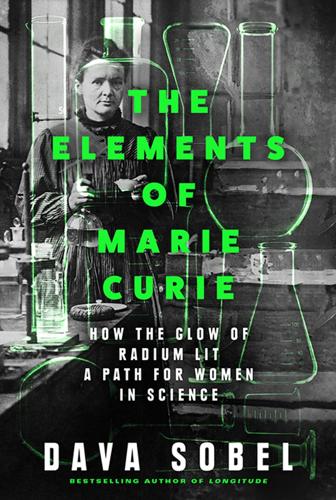
The Elements of Marie Curie
by
Dava Sobel
Published 20 Aug 2024
Also by Dava Sobel The Glass Universe: How the Ladies of the Harvard Observatory Took the Measure of the Stars And the Sun Stood Still: A Play A More Perfect Heaven: How Copernicus Revolutionized the Cosmos The Planets Letters to Father: Suor Maria Celeste to Galileo, 1623–1633 (translated by Dava Sobel) Galileo’s Daughter: A Historical Memoir of Science, Faith, and Love The Illustrated Longitude (with William J. H. Andrewes) Longitude: The True Story of a Lone Genius Who Solved the Greatest Scientific Problem of His Time About the Publisher Australia HarperCollins Publishers Australia Pty. Ltd. Level 13, 201 Elizabeth Street Sydney, NSW 2000, Australia www.harpercollins.com.au Canada HarperCollins Canada Bay Adelaide Centre, East Tower 22 Adelaide Street West, 41st Floor Toronto, Ontario M5H 4E3, Canada www.harpercollins.ca India HarperCollins India A 75, Sector 57 Noida, Uttar Pradesh 201 301, India www.harpercollins.co.in New Zealand HarperCollins Publishers New Zealand Unit D1, 63 Apollo Drive Rosedale 0632 Auckland, New Zealand www.harpercollins.co.nz United Kingdom HarperCollins Publishers Ltd. 1 London Bridge Street London SE1 9GF, UK www.harpercollins.co.uk United States HarperCollins Publishers Inc. 195 Broadway New York, NY 10007 www.harpercollins.com
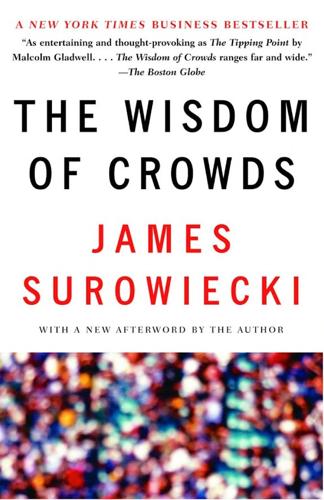
The Wisdom of Crowds
by
James Surowiecki
Published 1 Jan 2004
And the result was that this cobbled-together multinational alliance found an answer to its problem as quickly and efficiently as any top-down organization could have. THE SCOPE AND SPEED of the SARS research effort made it unique. But in one sense the successful collaboration between the labs was simply an exemplary case of the way much modern science gets done. Although in the popular imagination science remains the province of the lone genius working alone in his lab, in fact it is, in more ways than one, a profoundly collective enterprise. Before World War I, collaboration was relatively rare for scientists. But that began to change in the decades before World War II, and in the postwar years teamwork and group projects proliferated rapidly.
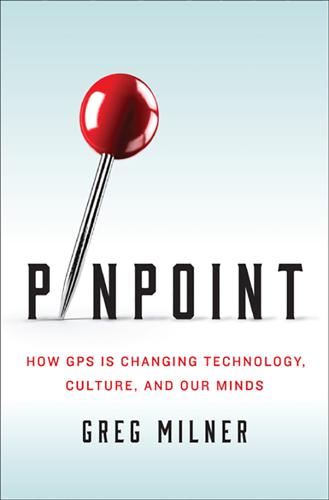
Pinpoint: How GPS Is Changing Our World
by
Greg Milner
Published 4 May 2016
Chapter 2: The When and the Where 24 the transit of Venus: Steven Cherry, Transit of Venus: The Other Half of the Longitude Story, Techwise Conversations, n.d., http://spectrum.ieee.org/podcast/geek-life/profiles/transit-of-venus-the-other-half-of-the-longitude-story. 26 “discovering the longitude”: Dava Sobel, Longitude: The True Story of a Lone Genius Who Solved the Greatest Scientific Problem of His Time (New York: Walker and Co., 1995), 56. 27 In 1800, Chevalier de Lamarck: Walter Sullivan, “The IGY—Scientific Alliance In a Divided World,” Bulletin of the Atomic Scientists 14, no. 2 (February 1958): 68–72. 28 first international organization: Ibid., 68. 28 “the largest organized intellectual enterprise”: John A.

The Metropolitan Revolution: How Cities and Metros Are Fixing Our Broken Politics and Fragile Economy
by
Bruce Katz
and
Jennifer Bradley
Published 10 Jun 2013
One charismatic visionary (a mayor, school superintendent, entrepreneur, outraged citizen) steps up and, with unrelenting vigor and inspirational leadership, starts an irreversible cascade of change. But this search for the superhero is misguided. A growing body of research suggests that as a system or a problem becomes more complex, more minds are needed to adjust the system or solve the problem. It is unlikely that a lone genius can come up with breakthrough solutions, whether in technology or the economy or any other area of life. Metropolitan areas are so big, so complicated, and so diverse that they don’t need heroes, they need networks. The word network has been used so often that it is in danger of becoming as faded of meaning as its pre-Web2.0 predecessor, community.
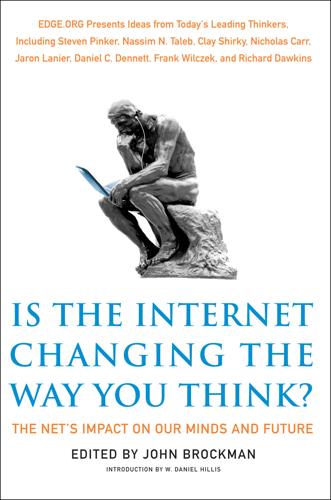
Is the Internet Changing the Way You Think?: The Net's Impact on Our Minds and Future
by
John Brockman
Published 18 Jan 2011
The chemists were, to use the avant-garde playwright Richard Foreman’s phrase, “pancake people.” They abandoned the spiritual depths of alchemy for a continual and continually incomplete grappling with what was real, a task so daunting that no one person could take it on alone. Though the history of science we learn as schoolchildren is often marked by the trope of the lone genius, science has always been a networked operation. In this, we can see a precursor to what’s possible for us today. The Invisible College didn’t just use the printing press as raw capability but created a culture that used the press to support the transparency and argumentation that science relies on.
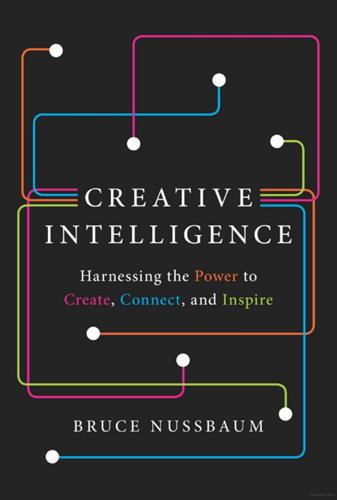
Creative Intelligence: Harnessing the Power to Create, Connect, and Inspire
by
Bruce Nussbaum
Published 5 Mar 2013
But even then, neuroscience runs the risk of being just like the shadow on the screen in a Javanese puppet play, revealing the reflection of reality, rather than the reality itself. And so, as fascinating as the new research on creativity from neuroscience is, as much as it has helped to debunk the idea of the lone genius, it’s time to also toss out the old lightbulb, and turn a more wary eye on the brain wave machines that so beguile us. As cool as “aha moments” are, and as interesting as it is to understand what parts of our brain are working when we’re improvising or solving a problem when we’re in the shower, creativity is about so much more than that moment . . . and it’s about so much more than the individual experiencing that moment.
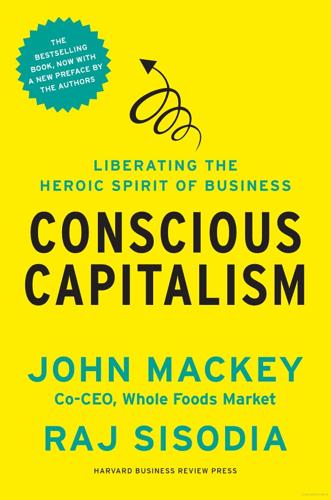
Conscious Capitalism, With a New Preface by the Authors: Liberating the Heroic Spirit of Business
by
John Mackey
,
Rajendra Sisodia
and
Bill George
Published 7 Jan 2014
Most of our incentive programs are team-based, not individual. For example, gain-sharing bonuses are awarded according to team performance. Teams allow people to feel safe and have a sense of belonging. The creative ideas of individuals bounce around within the team and get improved upon. Especially in the United States, there is a myth of the lone genius coming up with brilliant ideas that change the world. While that occasionally happens, the more common scenario is that an individual comes up with an idea and shares it with other members of his or her team; they become excited and improve upon it. The spirit of collaboration allows the idea to evolve and mature.

Drunk: How We Sipped, Danced, and Stumbled Our Way to Civilization
by
Edward Slingerland
Published 31 May 2021
Once we bet all of our chips on cultural learning, there was no going back to asocial, individual learning. There is a common image of human innovators or pioneers as isolated, bold individuals, wresting solutions to the puzzles presented by nature through sheer willpower and insight. This ideal of the lone genius may well describe an innovative chimpanzee or crow, but is nonsense when it comes to humans. Chimpanzees are strong and independent and smart; humans are weak, dependent on others, and, as individuals, no rocket scientists. Like the cave tetra, we are elaborately adapted to life in the dark, sheltered cave of social learning, but would be blind and helpless if thrown into a world without culture.

Nobody's Fool: Why We Get Taken in and What We Can Do About It
by
Daniel Simons
and
Christopher Chabris
Published 10 Jul 2023
Pierce’s Pleasant Pellets during the 1918 influenza pandemic to frontal lobotomies in the mid-twentieth century to hydroxychloroquine and ivermectin during the Covid-19 pandemic, people in distress often seek unproven, risky medical treatments. Some of these “miracle drugs” are effective for other disorders—hydroxychloroquine is a standard antimalarial and ivermectin an effective antiparasitic. But the alternative uses for such drugs bear the hallmarks of pseudoscience: a founder story in which a lone genius discovers their utility, an evidence base of personal testimonials rather than randomized clinical trials, and unverifiable claims of unprecedented effectiveness in treating a tremendous variety of ailments.2 WHY SNAKE OIL SALESMEN DESERVE THEIR REPUTATION—BUT SNAKE OIL DOESN’T Claims of miracle therapies are commonplace today, but they reached their apex in the patent medicine era of the late nineteenth century.
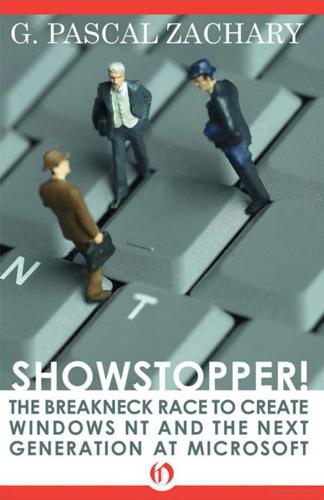
Showstopper!: The Breakneck Race to Create Windows NT and the Next Generation at Microsoft
by
G. Pascal Zachary
Published 1 Apr 2014
A quarter century since the first fissures were spotted in the edifice of Bigness, it is now fashionable to dismiss big organizations as dinosaurs, incapable of managing complexity. It is hard to argue against specific examples. But this does not mean that small organizations are by definition the answer to the challenge of complexity. While the entrepreneur and the lone genius are rightly celebrated as engines of creative destruction, “small is beautiful” is a false cure for the Bigness disease. The really grand dreams of humanity increasingly require immense resources and armies of skilled people; however nimble, small agencies are ill equipped to marshal the required people and resources.
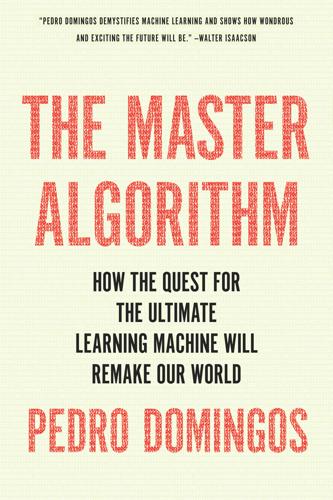
The Master Algorithm: How the Quest for the Ultimate Learning Machine Will Remake Our World
by
Pedro Domingos
Published 21 Sep 2015
Some may say that seeking a universal learner is the epitome of techno-hubris. But dreaming is not hubris. Maybe the Master Algorithm will take its place among the great chimeras, alongside the philosopher’s stone and the perpetual motion machine. Or perhaps it will be more like finding the longitude at sea, given up as too difficult until a lone genius solved it. More likely, it will be the work of generations, raised stone by stone like a cathedral. The only way to find out is to get up early one day and set out on the journey. Candidates that don’t make the cut So, if the Master Algorithm exists, what is it? A seemingly obvious candidate is memorization: just remember everything you’ve seen; after a while you’ll have seen everything there is to see, and therefore know everything there is to know.

Digital Gold: Bitcoin and the Inside Story of the Misfits and Millionaires Trying to Reinvent Money
by
Nathaniel Popper
Published 18 May 2015
Five years later, it was estimated that only 15 percent of the basic Bitcoin computer code was the same as what Satoshi had written. Beyond the work on the software, Bitcoin, like all money, was always only as useful and powerful as the number of people using it. Each new person who joined in made it that much more likely to survive. This, then, is not a normal startup story, about a lone genius molding the world in his image and making gobs of money. It is, instead, a tale of a group invention that tapped into many of the prevailing currents of our time: the anger at the government and Wall Street; the battles between Silicon Valley and the financial industry; and the hopes we have placed in technology to save us from our own human frailty, as well as the fear that the power of technology can generate.

Arriving Today: From Factory to Front Door -- Why Everything Has Changed About How and What We Buy
by
Christopher Mims
Published 13 Sep 2021
conscripted into forced labor: Ian Urbina, The Outlaw Ocean: Journeys Across the Last Untamed Frontier (New York: Alfred A. Knopf, 2019). recalled in a video: Jeff Tsang, “WE NEARLY CRASHED! OUR ENGINE BROKE!? A Close Call with Pack of 200+ Ships Outside Shanghai,” YouTube, March 22, 2020, https://www.youtube.com/watch?v=h1-wbV8PkmI. superaccurate marine clocks: Dava Sobel, Longitude: The True Story of a Lone Genius Who Solved the Greatest Scientific Problem of His Time (London: Fourth Estate, 2014). age of the Titanic: “History of Sperry Marine,” Sperry Marine, https://www.sperrymarine.com/corporate-history/sperry-marine. electromechanical device: “‘Metal Mike’ Guides the Queen Elizabeth,” New York Times, September 26, 1946.
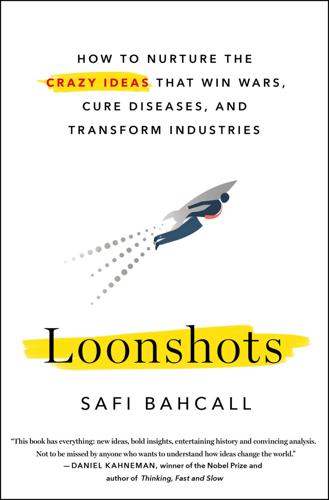
Loonshots: How to Nurture the Crazy Ideas That Win Wars, Cure Diseases, and Transform Industries
by
Safi Bahcall
Published 19 Mar 2019
no Copernican theory: Copernicus and every scholar who used advanced mathematics in early modern Europe relied on the algebra, trigonometry, and modern numerical system developed in India and the Islamic empire and widely disseminated throughout Europe (along with the medical advances of Avicenna). The more recent challenge to the “lone genius” Eurocentric story has been the discoveries by historians, beginning in the late 1950s, of striking similarities between crucial theorems used by Copernicus and the work of the Islamic astronomers al-Dīn al-`Urdī (d. 1266), Nasīr al-Dīn al-Tūsī (d. 1274), Ibn al-Shātir (d. 1375), and Ali Qushjī (d. 1474).
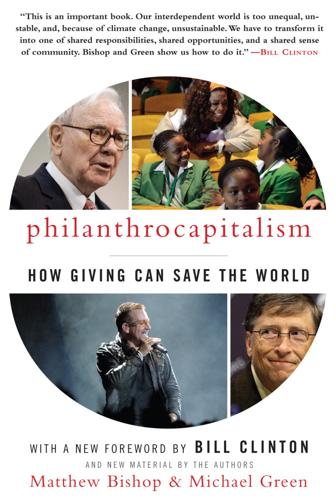
Philanthrocapitalism
by
Matthew Bishop
,
Michael Green
and
Bill Clinton
Published 29 Sep 2008
An Inquiry into the Nature and Causes of the Wealth of Nations 1776. A facsimile of the first edition with an introduction by Edwin Connor, Chicago: University of Chicago Press, 1977. Smith, A. The Theory of Moral Sentiments. Amherst, NY: Prometheus Books, 2000. Sobel, Dava. Longitude: The True Story of a Lone Genius Who Solved the Greatest Scientific Problem of His Time. New York: Walker and Company, 2005. Soros, George. The Age of Fallibility: Consequences of the War on Terror. New York: PublicAffairs, 2006. Tayart de Borms, L. Foundations: Creating Impact in a Globalised World. Cornwall, U.K.: Wiley, 2005.
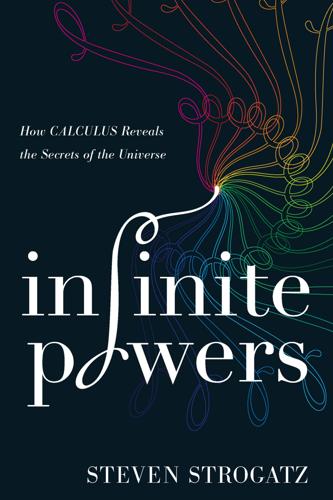
Infinite Powers: How Calculus Reveals the Secrets of the Universe
by
Steven Strogatz
Published 31 Mar 2019
“Determination of Azimuth Angle at Burnout for Placing a Satellite Over a Selected Earth Position.” NASA Technical Report, NASA-TN-D-233, L-289 (1960). https://ntrs.nasa.gov/archive/nasa/casi.ntrs.nasa.gov/19980227091.pdf. Sobel, Dava. Galileo’s Daughter: A Historical Memoir of Science, Faith, and Love. New York: Walker, 1999. ———. Longitude: The True Story of a Lone Genius Who Solved the Greatest Scientific Problem of His Time. New York: Walker, 1995. Stein, Sherman. Archimedes: What Did He Do Besides Cry Eureka? Washington, DC: Mathematical Association of America, 1999. Stewart, Ian. Calculating the Cosmos. New York: Basic Books, 2016. ———. Does God Play Dice?

Ageless: The New Science of Getting Older Without Getting Old
by
Andrew Steele
Published 24 Dec 2020
However and whenever we do manage to cure ageing, this is how it will happen: the cure for ageing will be a jigsaw of treatments which evolves with time, a succession of technologies which gradually improve life expectancy to the point that people will notice that they’ve stopped ageing – not a miraculous magic bullet discovered in a flash of insight by a lone genius. The first ageless generation probably won’t realise their luck at first – they’ll grow up expecting to die at 100, or 150, or whatever ‘old’ is for their society but, one after another, lifesaving medical breakthroughs will push their funerals further and further into the future. It will be very hard to call when we’ve cured ageing if you live through it, constantly wondering if the next breakthrough could be the last and life expectancy will finally stall – but it will be blindingly obvious with hindsight, surveying centuries of life expectancy statistics, and spotting the point where people just stopped dying of old age.

The Dawn of Innovation: The First American Industrial Revolution
by
Charles R. Morris
Published 1 Jan 2012
Barraclough, Steelmaking Before Bessemer, vol. 2: Crucible Steel (London: The Metals Society, 1984), 102. 11 David S. Landes, The Wealth and Poverty of Nations (New York: Norton, 1998), 215–220. 12 N. A. M. Rodger, Command of the Sea: A Naval History of Britain, 1649–1815 (New York: W. W. Norton, 2005), 172. 13 Dava Sobel, Longitude: The True Story of a Lone Genius Who Solved the Greatest Scientific Mystery of His Time (New York: Penguin Books, 1995); David S. Landes, Revolution in Time (Cambridge, MA: Harvard University Press, 1983), 145–170. 14 K. R. Gilbert, “Machine-Tools,” in Singer, ed., The Industrial Revolution, 417–441; K. R. Gilbert, Henry Maudslay: Machine Builder (London: Science Museum, 1971); Joseph Wickham Roe, English and American Tool Builders (New Haven, CT: Yale University Press, 1916), 33–49. 15 Maurice Damaus, “Precision Mechanics,” in Singer, ed., The Industrial Revolution, 379–416, quote at 414. 16 Gilbert, Henry Maudslay, 4. 17 James Nasmyth, An Autobiography, Samuel Smiles, ed.

Work Won't Love You Back: How Devotion to Our Jobs Keeps Us Exploited, Exhausted, and Alone
by
Sarah Jaffe
Published 26 Jan 2021
Historical precedent gives them a great deal of involvement in university governance, and their work has long been seen as more of a vocation than simply a job. In this way, though the teaching part of the job is not actually all that different from teaching a grade-school class, the image of the academic has much in common with the image of the artist as lone genius, though perhaps swathed in tweed in a corner office stuffed with books rather than a paint-splattered garret studio. 1 Higher education has a long history as a tiered, hierarchical structure: after all, it’s there in the name. Higher education was, from imperial China to the pre-Columbian Americas, a way to train the upper castes of society first and foremost.
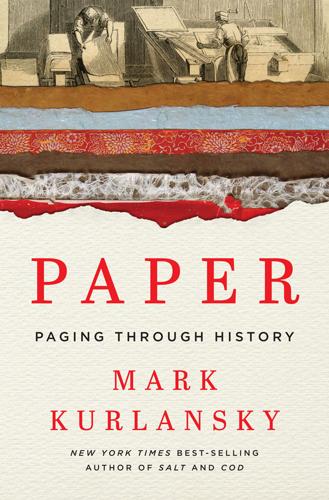
Paper: A World History
by
Mark Kurlansky
Published 3 Apr 2016
It is significant that the leading pre-paper writing materials—wood, bamboo, and silk—contain cellulose and can be broken down for papermaking. Some historians think that the idea of papermaking came from felting, a practice that pre-dated weaving and entailed beating wool until it mashed into a thick, fibrous mat. Whatever occurred, surely paper had a long evolution. It seems highly improbable that some lone genius stumbled upon the idea by him- or herself. FOR MANY CENTURIES, every Chinese schoolchild has learned that paper was invented in 105 CE by a eunuch in the Han court named Cai Lun. It was the first of what the Chinese call the four great inventions—paper, compass, gunpowder, and printing—and the only one that is attributed to a specific inventor.
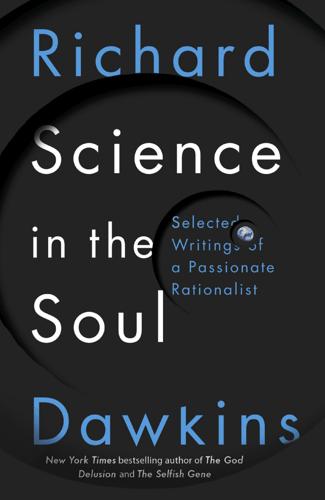
Science in the Soul: Selected Writings of a Passionate Rationalist
by
Richard Dawkins
Published 15 Mar 2017
Then he’s frank enough to say, ‘Beats the heck out of me.’ That’s honest, and I echo it. We don’t know. We don’t understand it. Yet. But I believe we will, some time before 2057. And if we do, it certainly won’t be mystics or theologians who solve this greatest of all riddles but scientists – maybe a lone genius like Darwin, but more probably a combination of neuroscientists, computer scientists and science-savvy philosophers. Soul-1 will die a belated and unlamented death at the hand of science, which will in the process launch Soul-2 to undreamed-of heights. * * * *1 Crystal-ball gazing is a notoriously error-prone indulgence but, for what it’s worth, this was my contribution to Mike Wallace’s 2008 edited book The Way We Will Be Fifty Years from Today
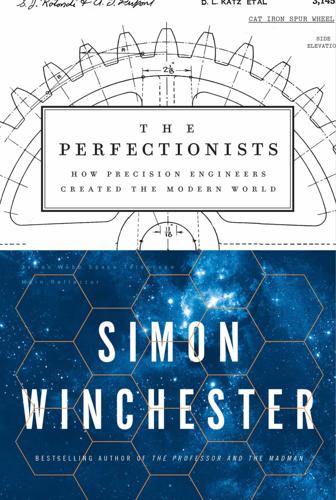
The Perfectionists: How Precision Engineers Created the Modern World
by
Simon Winchester
Published 7 May 2018
Nuclear Roulette: The Truth about the Most Dangerous Energy Source on Earth. White River Junction, VT. Chelsea Green Publishing. 2012. Smith, Merritt Roe. Harpers Ferry Armory and the New Technology: The Challenge of Change. Ithaca, NY. Cornell University Press. 1977. Sobel, Dava. Longitude: The True Story of a Lone Genius Who Solved the Greatest Scientific Problem of His Time. New York. Walker and Company. 1995. Soemers, Herman. Design Principles for Precision Mechanisms. Eindhoven, Netherlands. 2011. Standage, Tom. The Turk: The Life and Times of the Famous Eighteenth-Century Chess Playing Machine. New York. Walker and Company. 2002.
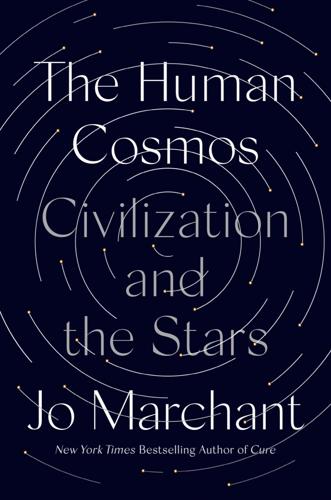
The Human Cosmos: A Secret History of the Stars
by
Jo Marchant
Published 15 Jan 2020
Age of Discovery: David Barrie, Sextant: A Voyage Guided by the Stars and the Men Who Mapped the World’s Oceans (Glasgow, UK: William Collins, 2014); Ben Finney, “Nautical Cartography and Traditional Navigation in Oceania,” in The History of Cartography, vol. 2, book 3, ed. David Woodward and Malcolm Lewis (Chicago: University of Chicago Press, 1998), 443–92. device he called H4: David Landes, Revolution in Time, 145–57. popularized in Dava Sobel’s: Dava Sobel, Longitude: The True Story of a Lone Genius Who Solved the Greatest Scientific Problem of His Time (New York: Walker & Co., 1995). measure a planet’s parallax: Edmund Halley, “A New Method of Determining the Parallax of the Sun,” Philosophical Transactions 29 (1716): 454; Michael Chauvin, “Astronomy in the Sandwich Islands: The 1874 Transit of Venus,” The Hawaiian Journal of History 27 (1993): 185–225.
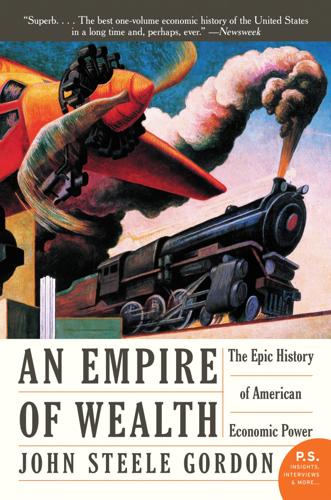
An Empire of Wealth: Rise of American Economy Power 1607-2000
by
John Steele Gordon
Published 12 Oct 2009
The railroad would prove the seminal invention of the nineteenth century and create the modern economy that Gibbons v. Ogden had made the United States ready for. LIKE SO MANY nineteenth-century inventions (and far more twentieth-century ones), the railroad was not a single invention created by a lone genius. Instead it was a system whose components were invented separately and then pieced together by people in the new profession of civil engineering (so-called because until the middle of the eighteenth century, “engineer” had been solely a military specialty). It had been known since the sixteenth century, when it was used in mining operations, that a draft animal (or a human being) could pull a much heavier load if the wagon was set on rails.
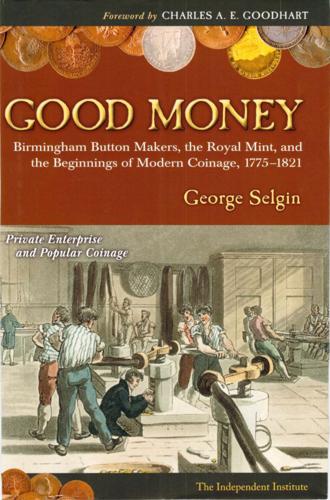
Good Money: Birmingham Button Makers, the Royal Mint, and the Beginnings of Modern Coinage, 1775-1821
by
George Anthony Selgin
Published 13 Jul 2008
Birmingham and Its Vicinity as a Manufacturing and Commercial District. Birmingham: Radclyffes. Snelling, Thomas. 1766. A Vietv ofthe Copper Coin and Coinage ofEngland. London: Thomas Snelling. SOURCES 335 Snelling, Thomas. 1775. Snelling on the Coins of Great Britain, France, and Ireland. London:J. Thane. Sobel, Dana. 1995. Longitude: The True Story of a Lone Genius 'Who Solved the Greatest Scientific Problem ofHis Time. New York: Walker and Company. Soldon, Norbert C. 1998. John Wilkinson (1728-1808), English Ironmaster and Inventor. Lewiston: Edwin Mellen. Spencer, Herbert. 1851. Social Statics. London: John Chapman. Spilman, J. C. 1982. "An Overview of Early American Coinage Technology."
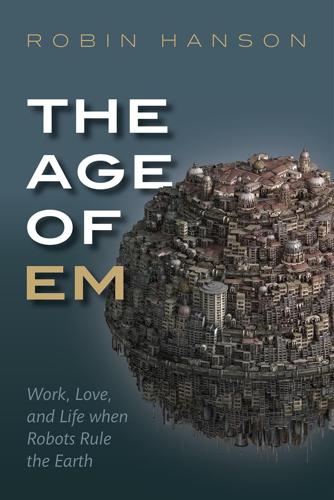
The Age of Em: Work, Love and Life When Robots Rule the Earth
by
Robin Hanson
Published 31 Mar 2016
Advocates also often assume that innovation is vastly underfunded today, that most economic progress comes from basic research progress produced by a few key geniuses, and that the modest wage gains that smarter people earn today vastly underestimate their productivity in key tasks of theft and AI innovation. In support, advocates often point to familiar myths of geniuses revolutionizing research areas and weapons. Honestly, to me this local intelligence explosion scenario looks suspiciously like a super-villain comic book plot. A flash of insight by a lone genius lets him create a genius AI. Hidden in its super-villain research lab lair, this genius villain AI works out unprecedented revolutions in AI design, turns itself into a super-genius, which then invents super-weapons and takes over the world. Bwa-ha-ha. Many arguments suggest that this scenario is unlikely (Hanson and Yudkowsky 2013).
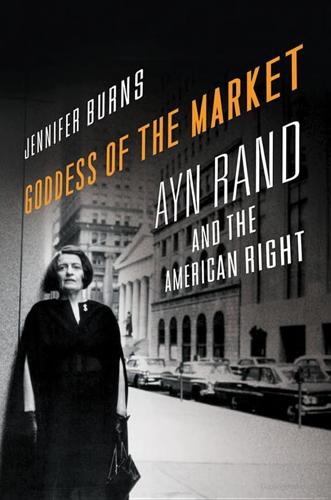
Goddess of the Market: Ayn Rand and the American Right
by
Jennifer Burns
Published 18 Oct 2009
Implacably opposed to pragmatism, existentialism, and Freudian psychology, she offered instead Objectivism, an absolutist philosophical system that insisted on the primacy of reason and the existence of a knowable, objective reality. Though she was out of fashion, Rand was not without a tradition or a community. Rather than a lonely genius, she was a deeply engaged thinker, embedded in multiple networks of friends and foes, always driven relentlessly to comment upon and condemn the tide of events that flowed around her. This book seeks to excavate a hidden Rand, one far more complex and contradictory than her public persona suggests.
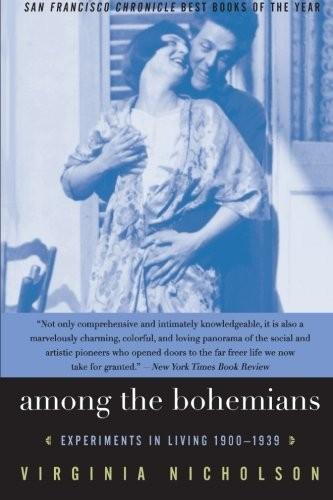
Among the Bohemians: Experiments in Living 1900-1939
by
Virginia Nicholson
Published 27 Nov 2003
Right from the start, the country of Bohemia was located wherever its inhabitants were to be found. The idea of Bohemia is immensely powerful. It has attached itself to individuals as disparate as Jesus Christ, Shakespeare and Sherlock Holmes, and everybody has a mental pigeonhole into which the imaginary Bohemian more or less fits. For many this takes shape as a garret, the refuge of the lonely genius. For others it is a tavern where gypsy-clad people drink and dance. Some conjure up with distaste the Parisian zinc cluttered with untalented phoneys – dirty, poor and smelly. A closer look reveals that the natives of Bohemia are not just painters and poets, but must also include vegetarian nature-lovers living in caravans, poseurs in velvet jackets drinking absinthe in the Café Royal, earnest lesbians in men’s suits and monocles, kohl-eyed beauties in chiffon and emeralds.
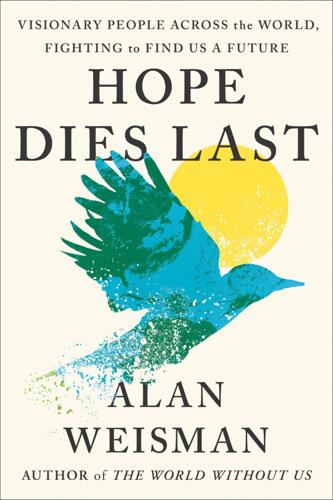
Hope Dies Last: Visionary People Across the World, Fighting to Find Us a Future
by
Alan Weisman
Published 21 Apr 2025
Questions still remained: Could ReBCO tape be protected against repetitive neutron bombardment? How would they remove the fusion reaction’s helium ash, and make dozens of other tweaks, as they built their working prototype, SPARC? These are problems for his design classes to tackle. “Breakthroughs don’t happen with a lone genius thinking in a corner,” he tells them. “It’s usually a half dozen people pushing themselves, using each other’s strengths to find a way.” His classes have more than doubled in size as more students, especially more women, want to be part of history—and of a future. Ramping up clean fusion could limitlessly electrolyze green hydrogen, to replace the mostly gray, carbon-intensive hydrogen from methane currently on the market.
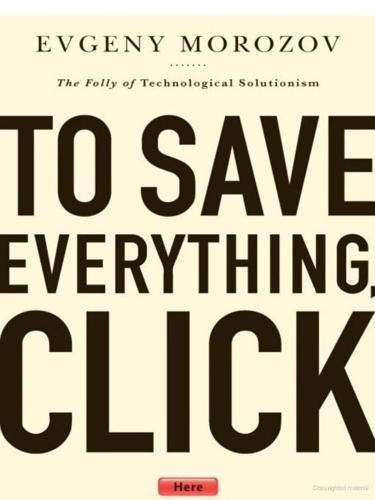
To Save Everything, Click Here: The Folly of Technological Solutionism
by
Evgeny Morozov
Published 15 Nov 2013
Sol Schwimmer is suing me”: Woody Allen, The Complete Prose of Woody Allen (New York: Wings Books, 1991), 105. 35 “when we think of information technology”: David Edgerton, Shock of the Old: Technology and Global History Since 1900 (London: Profile Books, 2011), xvi. 36 “the most wrenching cultural transformation since the Industrial Revolution”: “‘Antichrist of Silicon Valley,’ Andrew Keen Wary of Online Content Sharing,” Economic Times, May 29, 2012. 37 they don’t always capture the historical complexity: on the longitude problem, see Dava Sobel’s accessible history Longitude: The True Story of a Lone Genius Who Solved the Greatest Scientific Problem of His Time, reprint ed. (New York: Walker & Company, 2007). On early crowdsourcing efforts by the Smithsonian, see “Smithsonian Crowd-sourcing since 1849!,” Smithsonian Institution Archives, April 14, 2011, http://siarchives.si.edu/blog/smithsonian-crowdsourcing-1849.
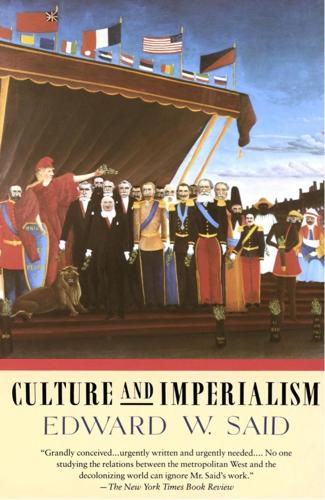
Culture and Imperialism
by
Edward W. Said
Published 29 May 1994
In time novels accumulate and become what Harry Levin has usefully called an institution of literature, but they do not ever lose either their status as events or their specific density as part of a continuous enterprise recognized and accepted as such by readers and other writers. But for all their social presence, novels are not reducible to a sociological current and cannot be done justice to aesthetically, culturally, and politically as subsidiary forms of class, ideology, or interest. Equally, however, novels are not simply the product of lonely genius (as a school of modern interpreters like Helen Vendler try to suggest), to be regarded only as manifestations of unconditioned creativity. Some of the most exciting recent criticism—Fredric Jameson’s The Political Unconscious and David Miller’s The Novel and the Police are two celebrated examples21—shows the novel generally, and narrative in particular, to have a sort of regulatory social presence in West European societies.
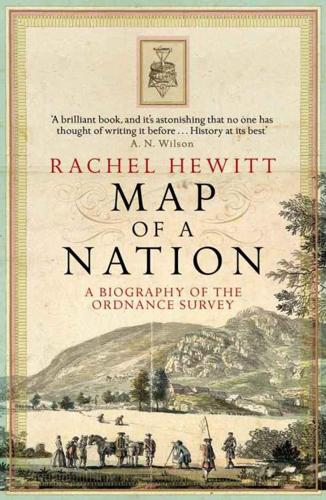
Map of a Nation: A Biography of the Ordnance Survey
by
Rachel Hewitt
Published 6 Jul 2011
Smyth, Jim (ed.), Revolution, Counter-Revolution, and Union: Ireland in the 1790s, Cambridge: Cambridge University Press, 2000. Smyth, John George, Sandhurst: The History of the Royal Military Academy, Woolwich, London: Weidenfeld & Nicolson, 1961. Sobel, Dava, Longitude: The True Story of a Lone Genius Who Solved the Greatest Scientific Problem of his Time, London: Fourth Estate, 1996. Society for Constitutional Information, Tracts Published and Distributed Gratis by the Society for Constitutional Information, London: W. Richardson, 1783. Speck, W.A., The Butcher: The Duke of Cumberland and the Suppression of the ’45, Oxford: Blackwell, 1981.
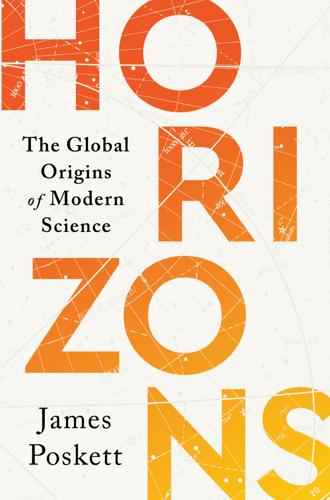
Horizons: The Global Origins of Modern Science
by
James Poskett
Published 22 Mar 2022
Even the idea that the Sun might be at the centre of the universe was not entirely new. A number of Muslim astronomers, dating back to the ninth century, had discussed this possibility, although the idea never gained widespread acceptance in the medieval Islamic world.27 Rather than thinking of Copernicus as some kind of lone genius who single-handedly initiated the scientific revolution, we should instead see him as part of a much broader story of global cultural exchange. The key event here was the rise of the Ottoman Empire in the eastern Mediterranean, particularly following the conquest of Istanbul in 1453. Byzantine refugees and Venetian traders returned from the Ottoman lands with hundreds of new scientific manuscripts.

Astounding: John W. Campbell, Isaac Asimov, Robert A. Heinlein, L. Ron Hubbard, and the Golden Age of Science Fiction
by
Alec Nevala-Lee
Published 22 Oct 2018
Occasionally, he would make a splash with a gimmick story—“The Irrelevant,” which he published under the name Karl van Campen, led to a scientific debate in the letters column that ran for months—but he found his greatest success with stories that focused on mood and atmosphere. It led to a profound change in his published work. His superscience stories, which he had written for his father, had often shared the same basic plot. A lone genius develops atomic power and uses it to build a spacecraft, drawing on the limitless resources of a wealthy benefactor. After a loving description of the ship, he encounters a war between two alien races, takes sides without hesitation, and triumphs through his superior weaponry. Technology was portrayed as an unalloyed good, while the heroic scientist or engineer—the avatar of the technocratic movement of the early thirties—was elevated to the status of a god.

From eternity to here: the quest for the ultimate theory of time
by
Sean M. Carroll
Published 15 Jan 2010
Physics and Chance: Philosophical Issues in the Foundations of Statistical Mechanics. Cambridge: Cambridge University Press, 1993. Smolin, L. The Life of the Cosmos. Oxford: Oxford University Press, 1993. Snow, C.P. The Two Cultures. Cambridge: Cambridge University Press, 1998. Sobel, D. Longitude: The True Story of a Lone Genius Who Solved the Greatest Scientific Problem of His Time. New York: Penguin, 1995. Spergel, D. N., et al., WMAP Collaboration. “First Year Wilkinson Microwave Anisotropy Probe (WMAP) Observations: Determination of Cosmological Parameters.” Astrophysical Journal Supplement 148 (2003): 175. Steinhardt, P.
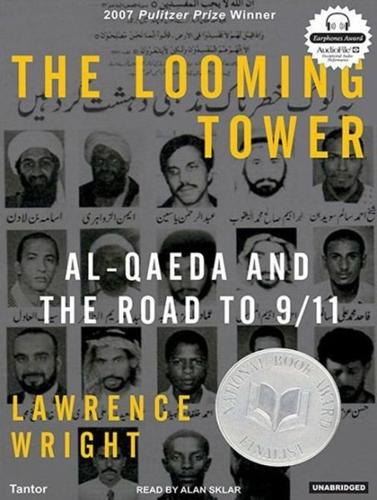
The Looming Tower: Al-Qaeda and the Road to 9/11
by
Lawrence Wright
Published 26 Sep 2006
Appalled, he closed the door in her face. “I heard her fall on the wooden floor outside and realized that she was drunk,” he recalled. “I instantly thanked God for defeating my temptation and allowing me to stick to my morals.” This is the man, then—decent, proud, tormented, self-righteous—whose lonely genius would unsettle Islam, threaten regimes across the Muslim world, and beckon to a generation of rootless young Arabs who were looking for meaning and purpose in their lives and would find it in jihad. QUTB ARRIVED in New York Harbor in the middle of the most prosperous holiday season the country had ever known.
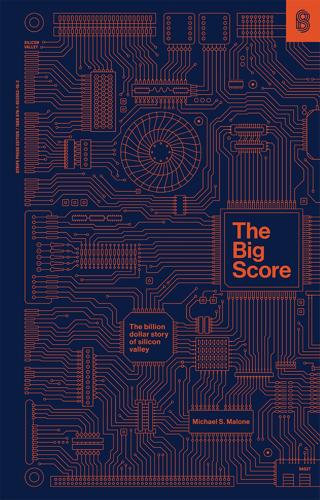
The Big Score
by
Michael S. Malone
Published 20 Jul 2021
After V-J Day, the occupying forces under MacArthur set about rebuilding the Japanese economy even more along American lines. It was a slow and painful process, and the Japanese had to suffer the humiliation of becoming synonymous with shoddy, cheap products. But, like most underdogs, the Japanese were avid learners. Their social structure was superbly suited for large manufacturing companies (if not to lone genius) and so they focused on production over marketing or breakthrough-type innovation. Japan might never come up with an invention on the order of the integrated circuit, but it was intent upon building them better, faster, and cheaper than any other nation. As a country with little national resources, a confined and aging population, and a dependence upon imported energy, Japan naturally gravitated toward electronics, with its high profits and low labor and materials requirements.

The Anarchy: The Relentless Rise of the East India Company
by
William Dalrymple
Published 9 Sep 2019
* The modern equivalences of these sums are: £1.25 and £2 million = £130 million and £210 million today; £1 million = £105 million; £8 million = £840 million; £3.2 millon = £336 million; £1.1 million = £115 million; £6 million = £630 million. * Over £4 million today. * The Reverend Nevil Maskelyne was, of course, the villain of Dava Sobel’s bestseller Longitude: The Story of a Lone Genius Who Solved the Greatest Scientific Problem of His Time, London, 1995. Here Maskelyne is painted, as one critic put it, as ‘a dull but jealous and snobbish Cambridge-trained cleric, whose elitism and privileging of astronomy over mechanical inventiveness prejudice him against the Yorkshire-born and Lincolnshire-bred [hero of the book, John] Harrison.

Energy and Civilization: A History
by
Vaclav Smil
Published 11 May 2017
Scientific American 242 (1): 138–148. Smith, P. C. 2015. Mitsubishi Zero: Japan’s Legendary Fighter. Barnsley: Pen & Sword Books. Smith, N. 1978. Roman hydraulic technology. Scientific American 238:154–161. Smythe, R. H. 1967. The Structure of the Horse. London: J. A. Allen & Co. Sobel, D. 1995. Longitude: The True Story of a Lone Genius Who Solved the Greatest Scientific Problem of His Time. New York: Penguin. Sockol, M. D., D. A. Raichlen, and H. Pontzer. 2007. Chimpanzee locomotor energetics and the origin of human bipedalism. Proceedings of the National Academy of Sciences of the United States of America 104:12265–12269. Soddy, F. 1933.

A Beautiful Mind
by
Sylvia Nasar
Published 11 Jun 1998
“To me one of the best things about the Heisenberg paper is its restriction to the observable quantities,” he wrote, adding that “I want to find a different and more satisfying under-picture of a non-observable reality.”49 It was this attempt that Nash would blame, decades later in a lecture to psychiatrists, for triggering his mental illness — calling his attempt to resolve the contradictions in quantum theory, on which he embarked in the summer of 1957, “possibly overreaching and psychologically destabilizing.”50 31 The Bomb Factory What’s the matter with being a loner and innovative? Isn’t that fine? But the [lone genius] has the same wishes as other people. If he were back in high school doing science projects, fine. But if he s too isolated and he’s disappointed in something big, it’s frightening, and fright can precipitate — PAUL HOWARD, McLean Hospital JÜRGEN MOSER had joined the M I T faculty in the fall of 1957 and was living with his wife, Gertrude, and his stepson, Richy, in a tiny rented house to the west of Boston in Needham near Wellesley College.
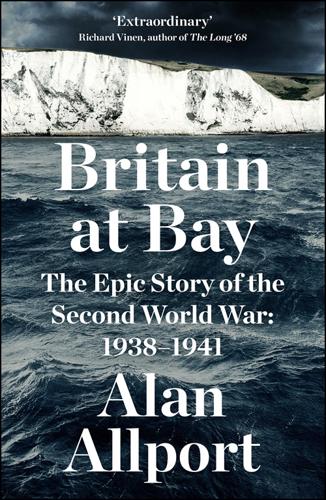
Britain at Bay: The Epic Story of the Second World War: 1938-1941
by
Alan Allport
Published 2 Sep 2020
Turing – gay, diffident, donnish, possibly autistic, certainly unconventional, the theorist and founding father of computer science and artificial intelligence, a man whose sexual ambivalence was persecuted by a bigoted and ungrateful post-war state – is a highly sympathetic figure to modern eyes. The spectacle of a lone genius such as him defeating the Nazi war machine using only the power of his brilliant nonconformist mind is irresistible. The 2014 film The Imitation Game portrayed Turing, played by Benedict Cumberbatch, standing in front of a gigantic map of the North Atlantic with God-like omniscience, making decisions about the life and death of millions.

Bourgeois Dignity: Why Economics Can't Explain the Modern World
by
Deirdre N. McCloskey
Published 15 Nov 2011
New Haven, CT: Yale University Press. Sng, Tuan-Hwee, and Chiaki Moriguchi. 2014. “Asia’s Little Divergence: State Capacity in China and Japan before 1850.” Unpublished paper, Center for Economic Institutions, Institute of Economic Research, Hitotsubasi University, Japan. Sobel, Dava. 1995. Longitude: The True Story of a Lone Genius Who Solved the Greatest Scientific Problem of His Time. New York: Penguin. Sombart, Werner. 1913 (1915). Der Bourgeois: Zur Geistesgeschichte des modernen Wirtschaftsmenschen. Trans. M. Epstein, as The Quintessence of Capitalism: A Study of the History and Psychology of the Modern Business Man.
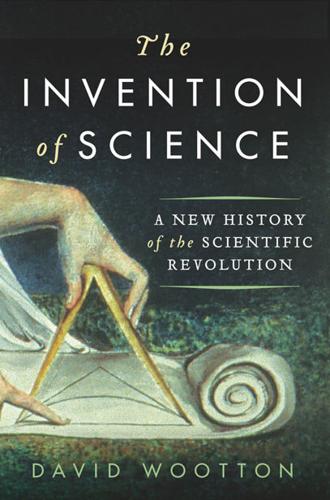
The Invention of Science: A New History of the Scientific Revolution
by
David Wootton
Published 7 Dec 2015
Studies in History and Philosophy of Science Part A 35 (2004): 573–603. Snow, Charles Percy. The Two Cultures and the Scientific Revolution. Cambridge: Cambridge University Press, 1959. Snow, Vernon F. ‘The Concept of Revolution in Seventeenth-century England’. Historical Journal 5 (1962): 167–74. Sobel, Dava. Longitude: The True Story of a Lone Genius Who Solved the Greatest Scientific Problem of His Time. New York: Walker, 1995. Sokal, Alan D. Beyond the Hoax: Science, Philosophy and Culture. Oxford: Oxford University Press, 2008. Soll, Jacob. The Reckoning: Financial Accountability and the Making and Breaking of Nations. London: Allen Lane, 2014.
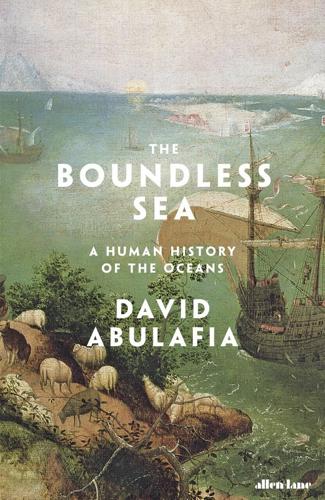
The Boundless Sea: A Human History of the Oceans
by
David Abulafia
Published 2 Oct 2019
Lummis, Pacific Paradises , pp. 13–14; Matsuda, Pacific Worlds , pp. 134–6; Gascoigne, Encountering the Pacific , pp. 146–8, 203–4; D. Igler, The Great Ocean: Pacific Worlds from Captain Cook to the Gold Rush (Oxford and New York, 2013), pp. 49–51. 39. Gascoigne, Encountering the Pacific , p. 233. 40. Ibid., pp. 141, 265. 41. Ibid., pp. 110, 137. 42. D. Sobel, Longitude: the True Story of a Lone Genius Who Solved the Greatest Scientific Problem of His Time (London, 1995), pp. 138–51. 43. Matsuda, Pacific Worlds , pp. 136–7; Gascoigne, Encountering the Pacific , pp. 138–9; Salmond, Aphrodite’s Island , pp. 36–8, 174–7, 203–35; Thomas, Islanders , pp. 17–19 (Tupaia’s map: fig. 4, p. 18); Couper, Sailors and Traders , pp. 1–2, 67–8. 44.